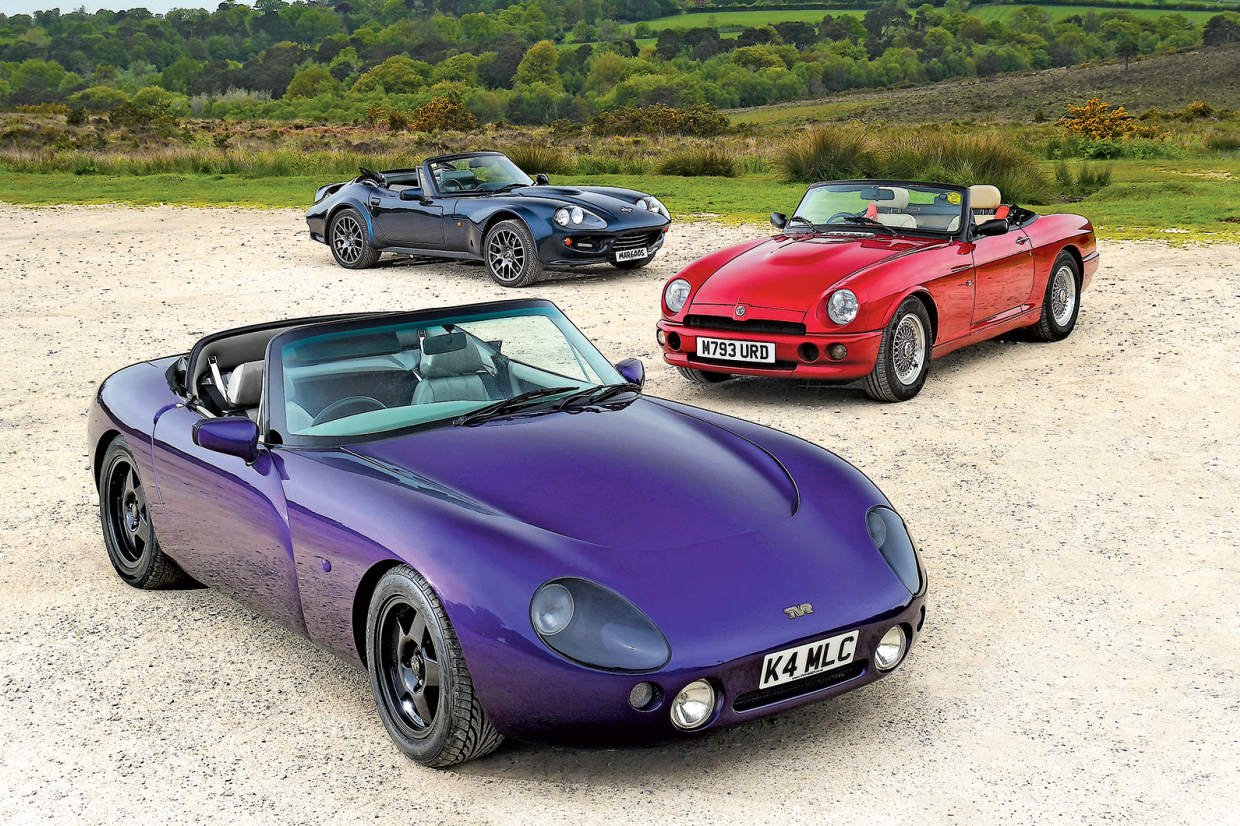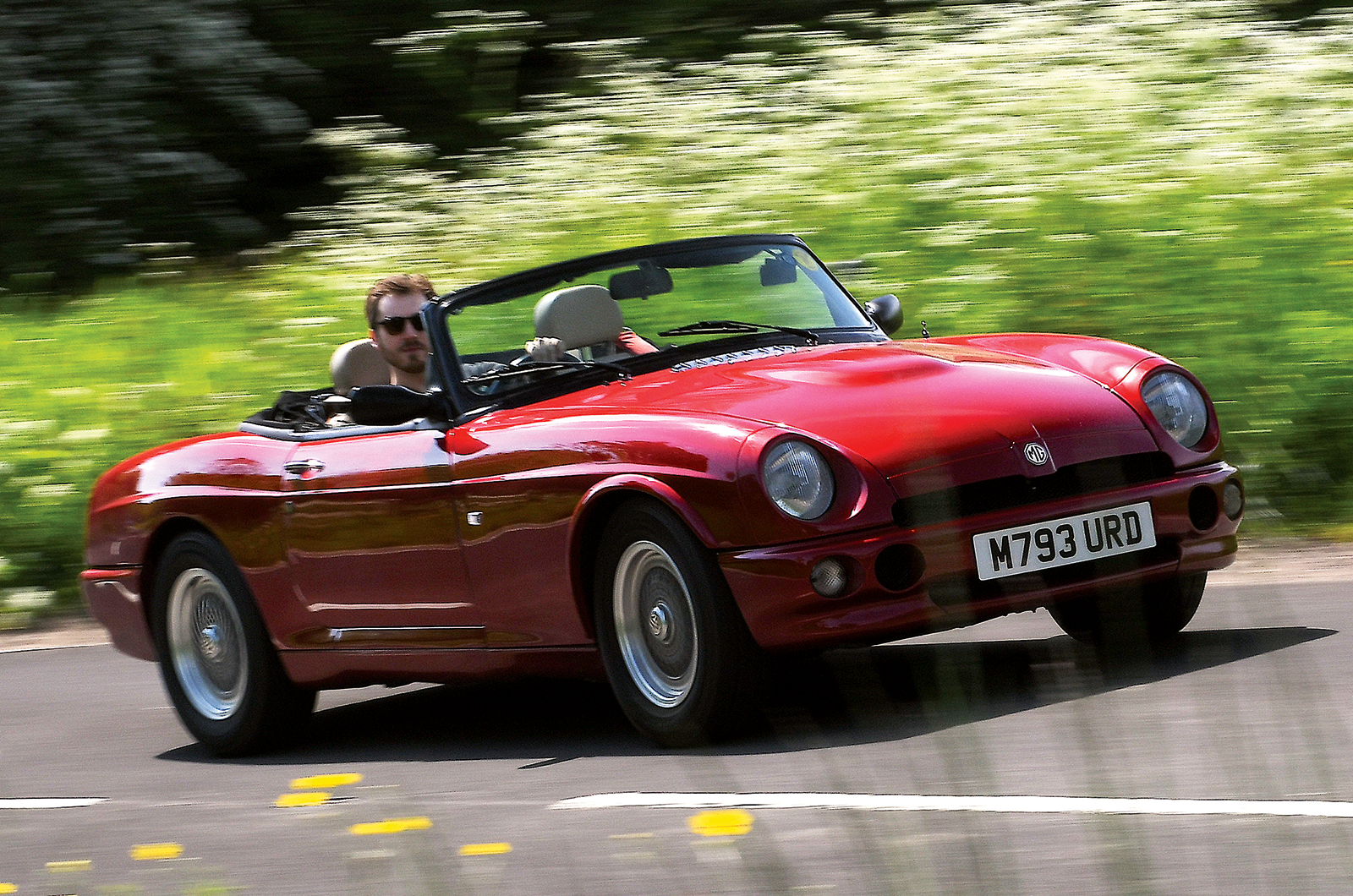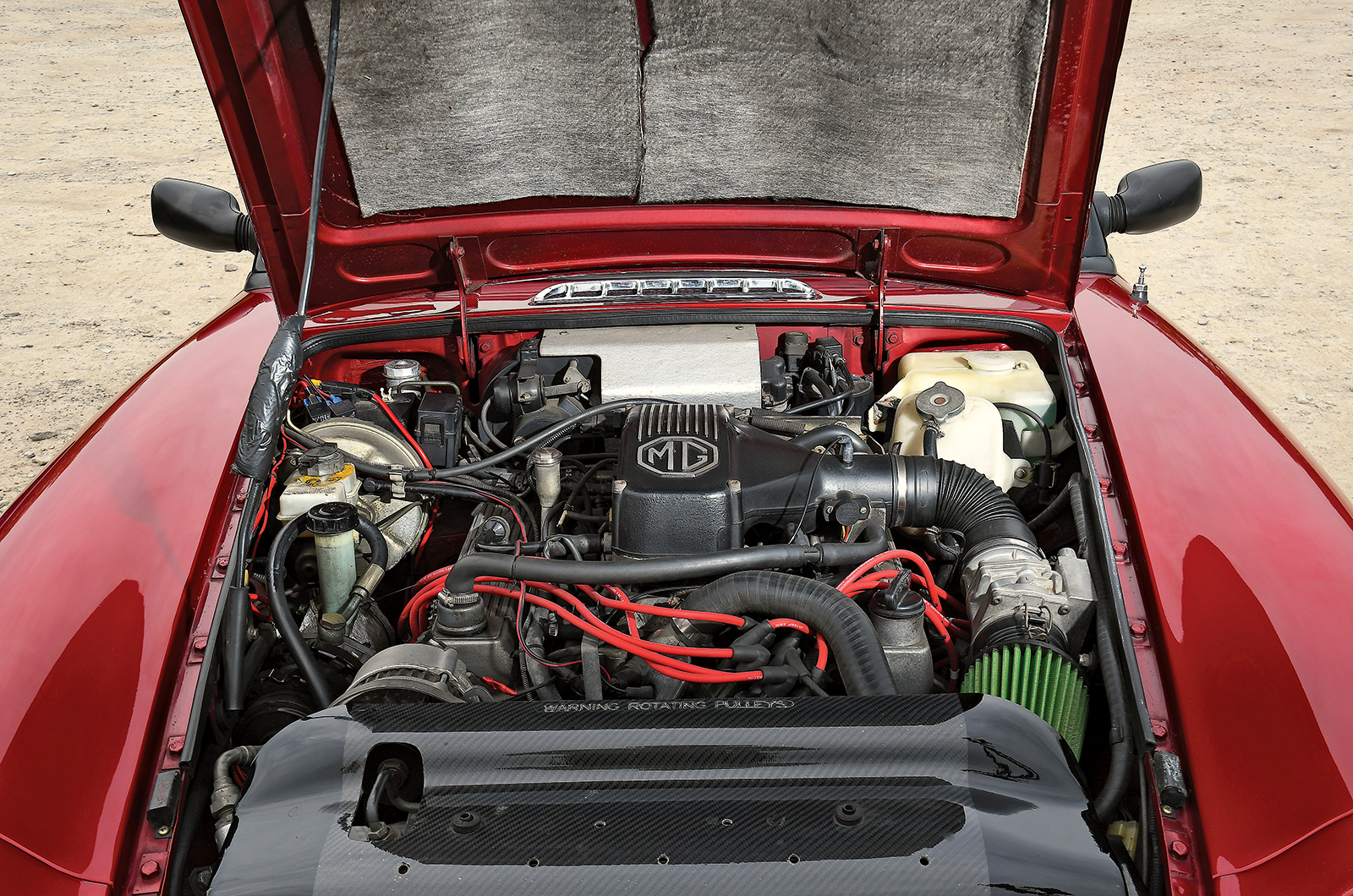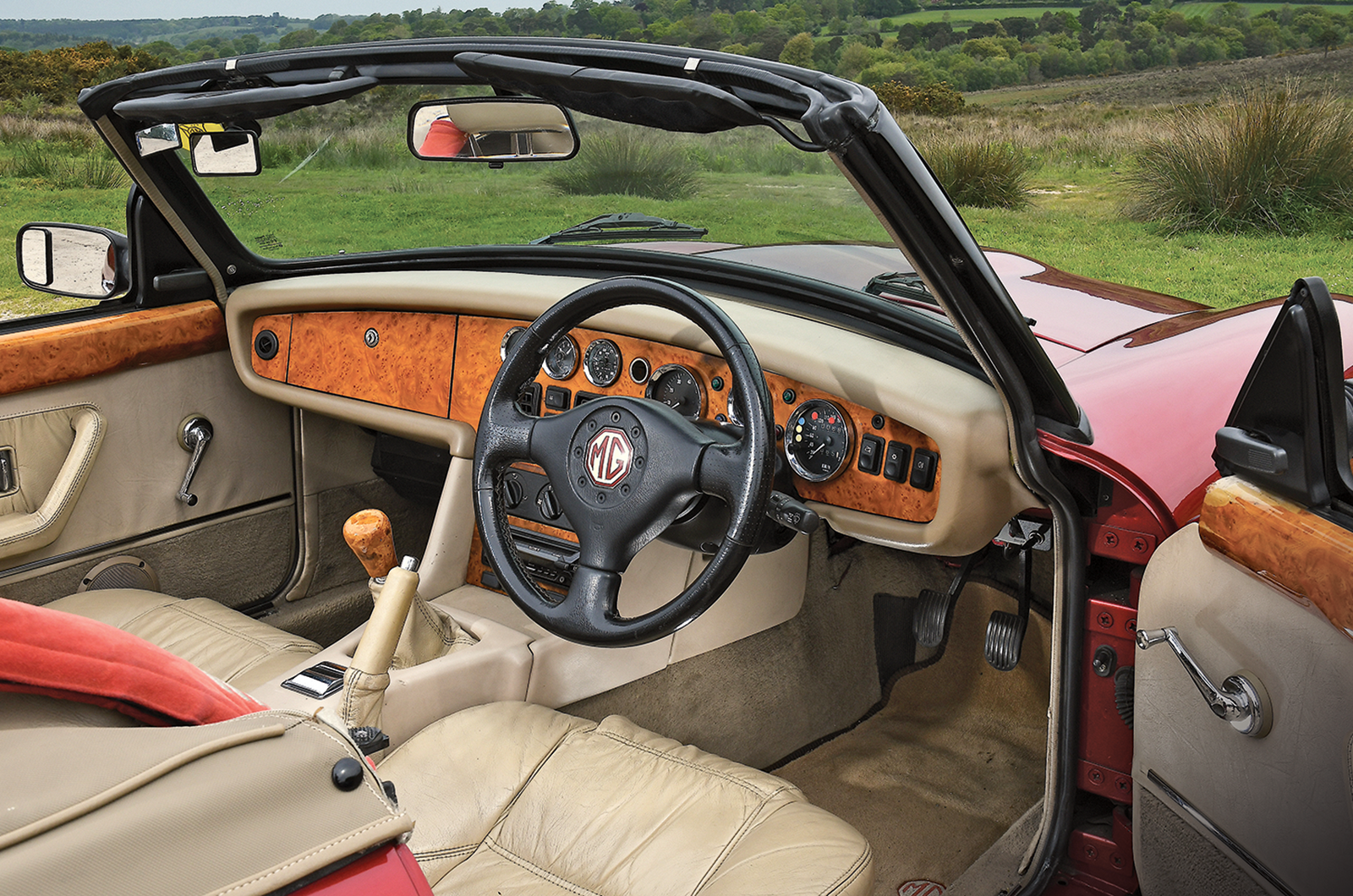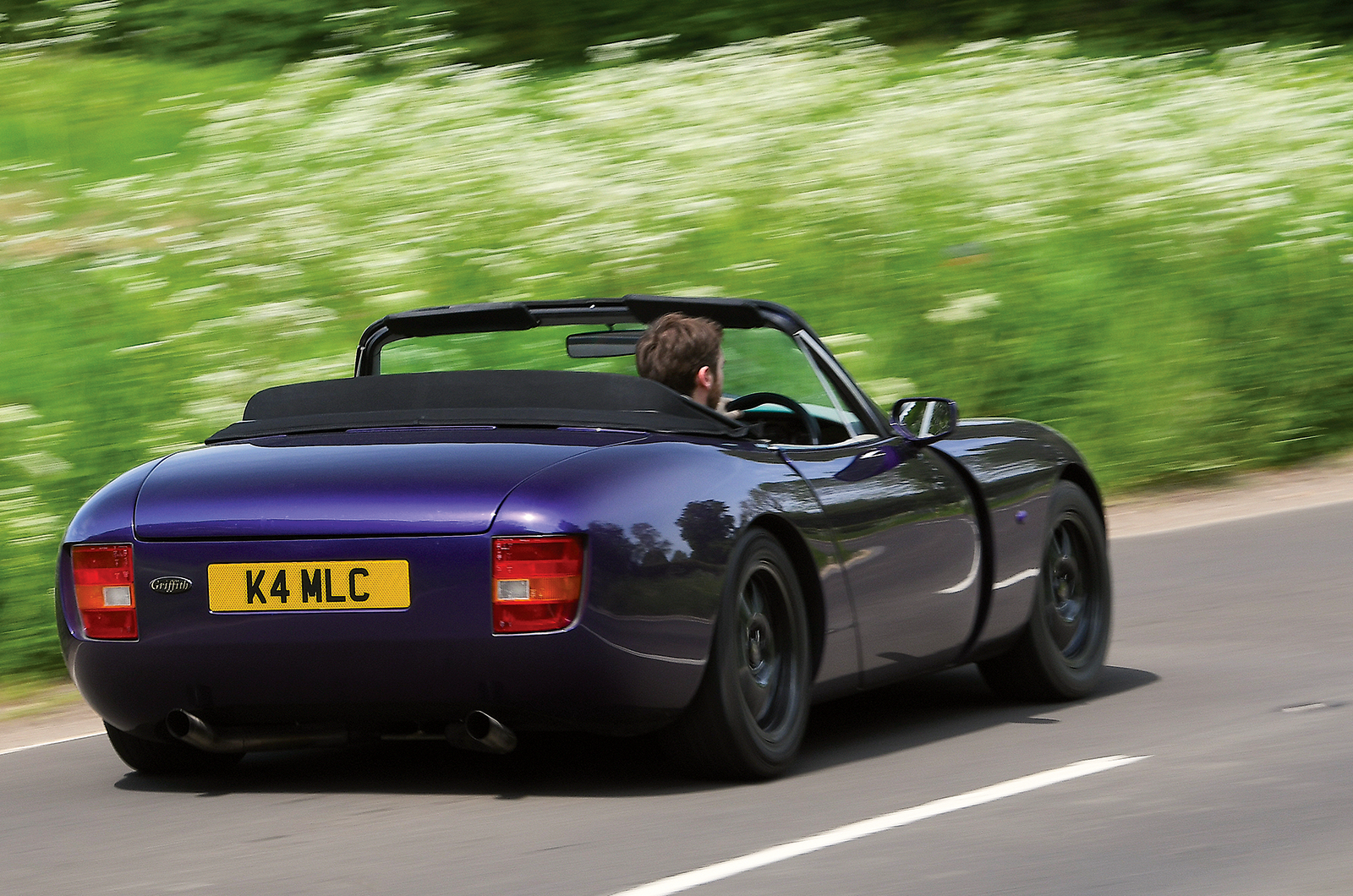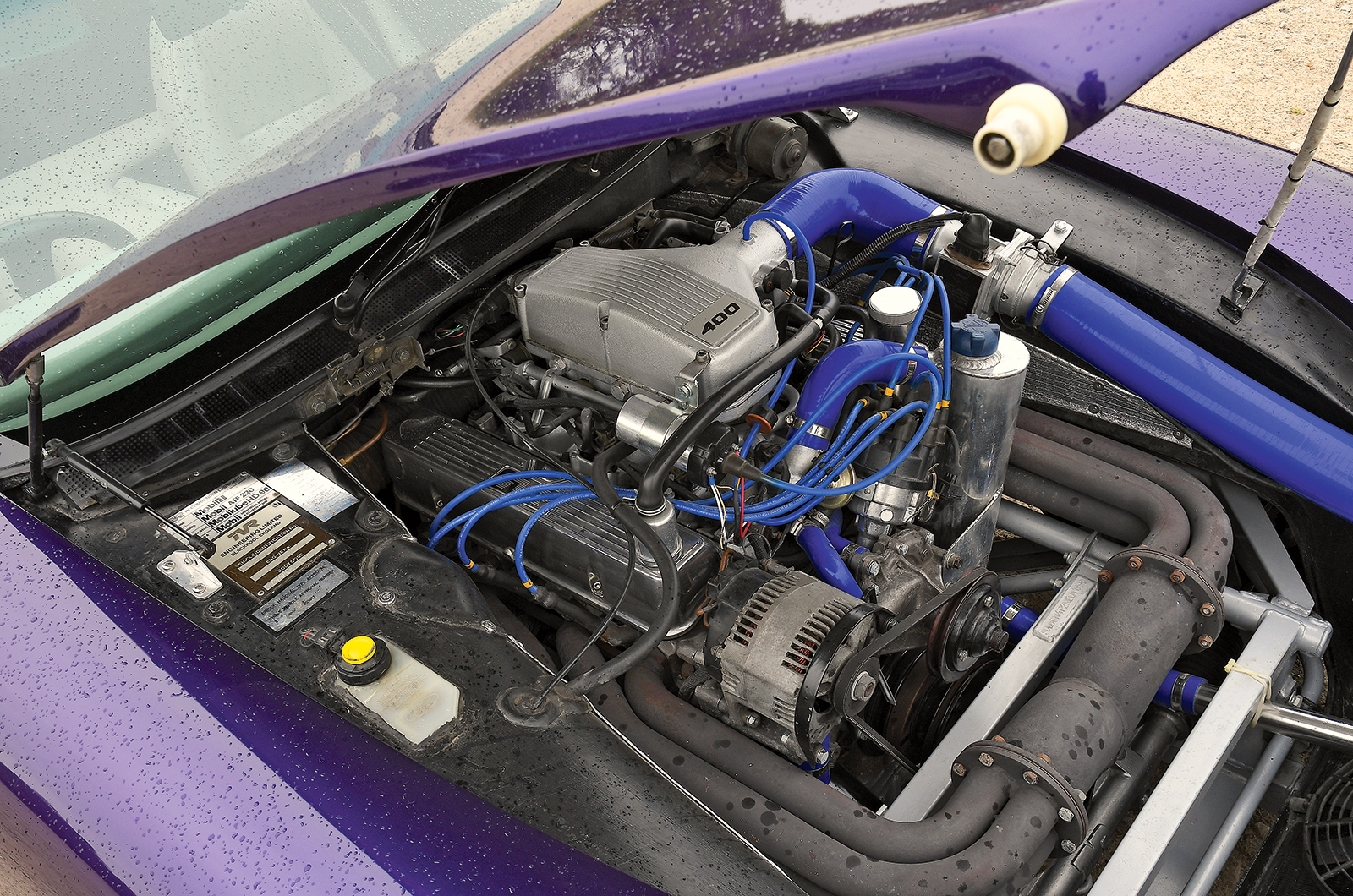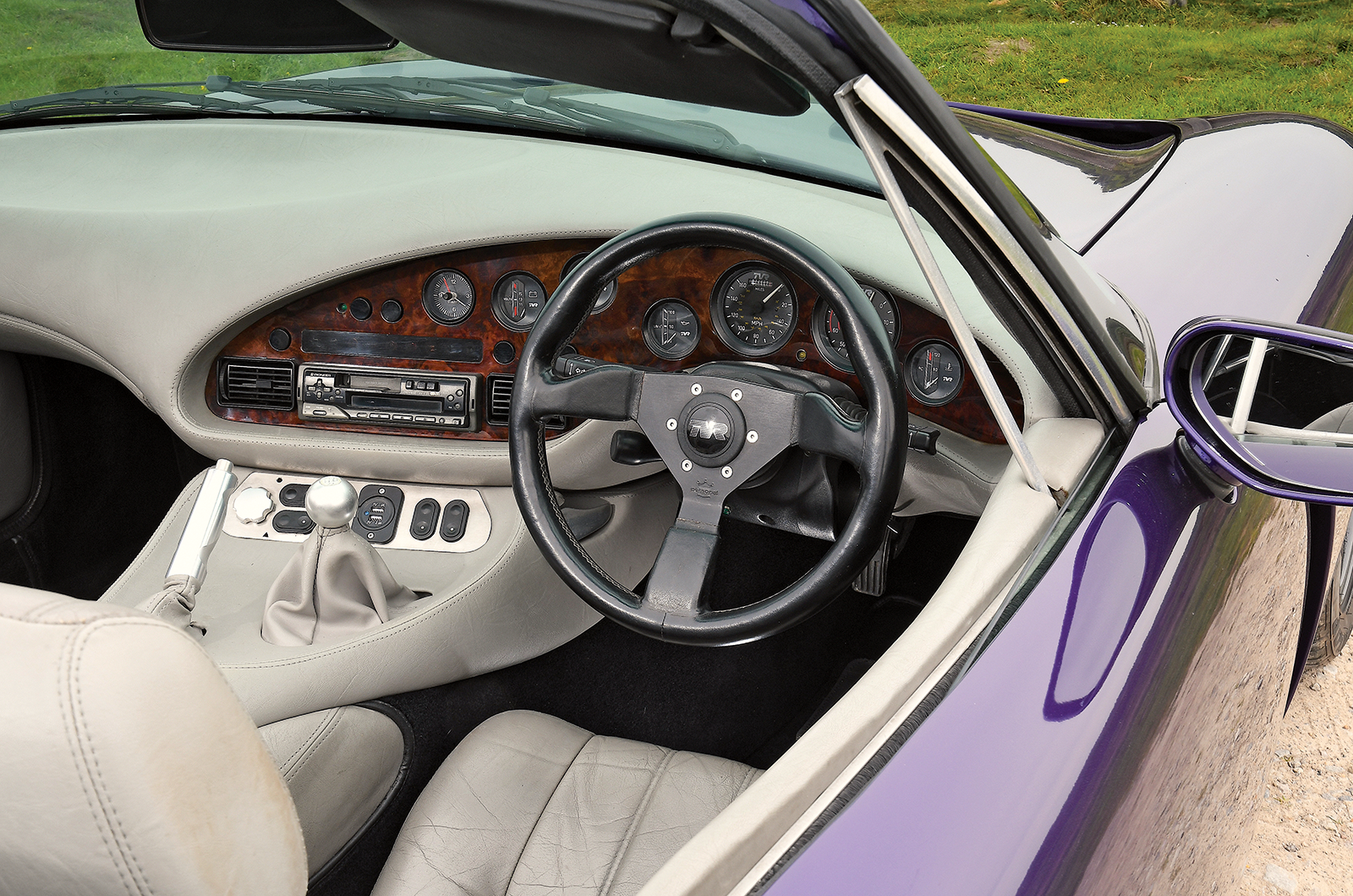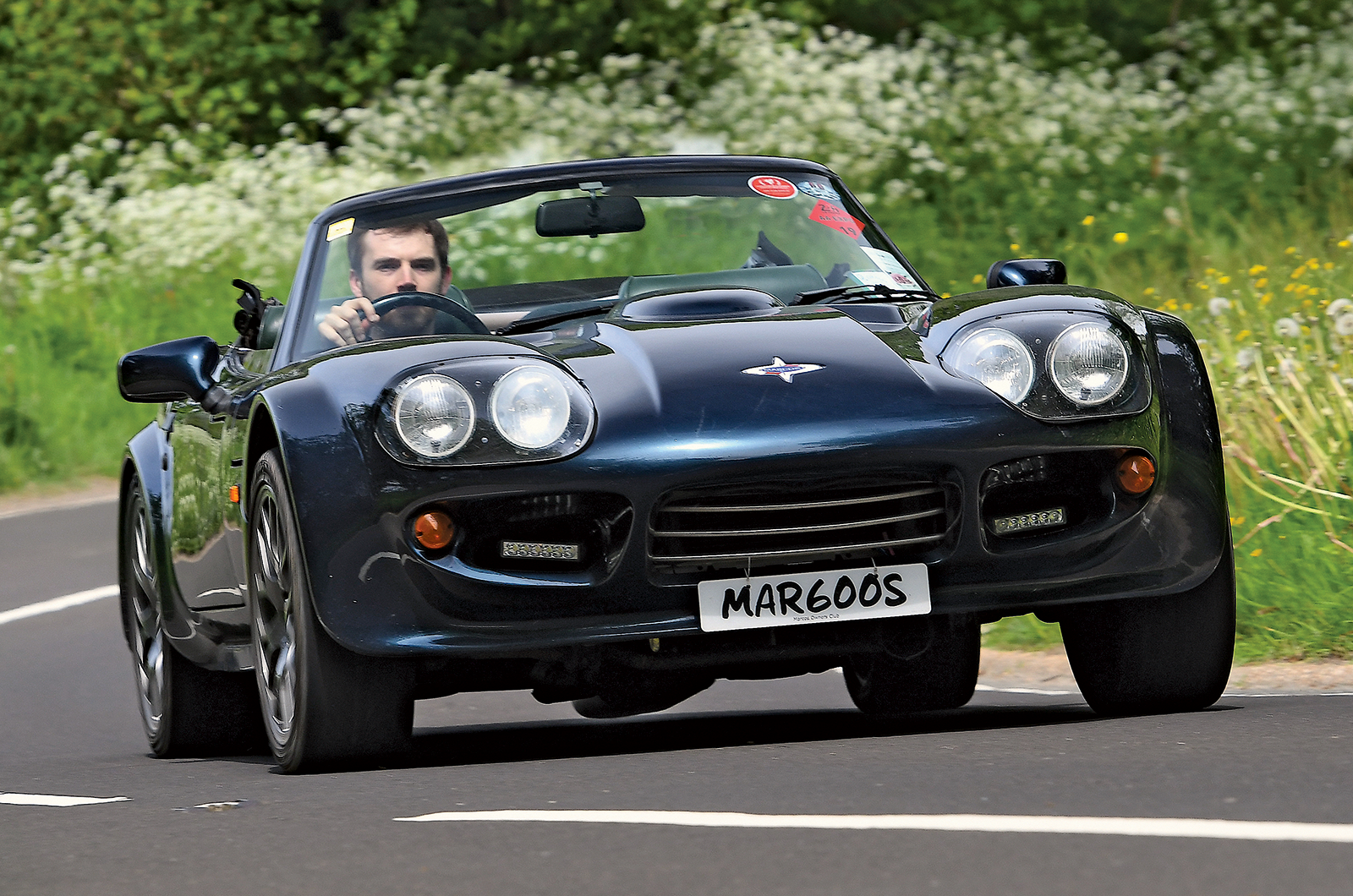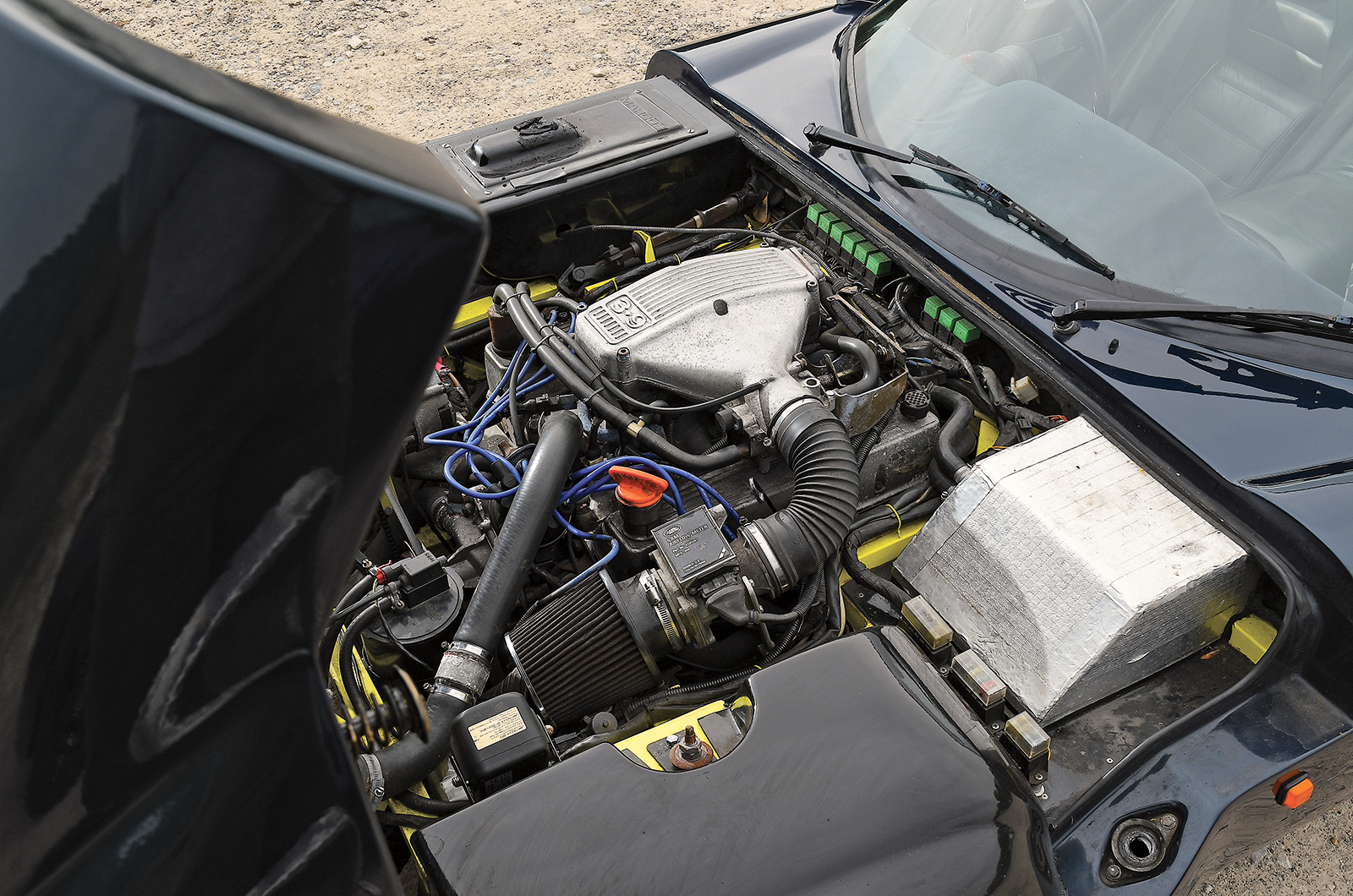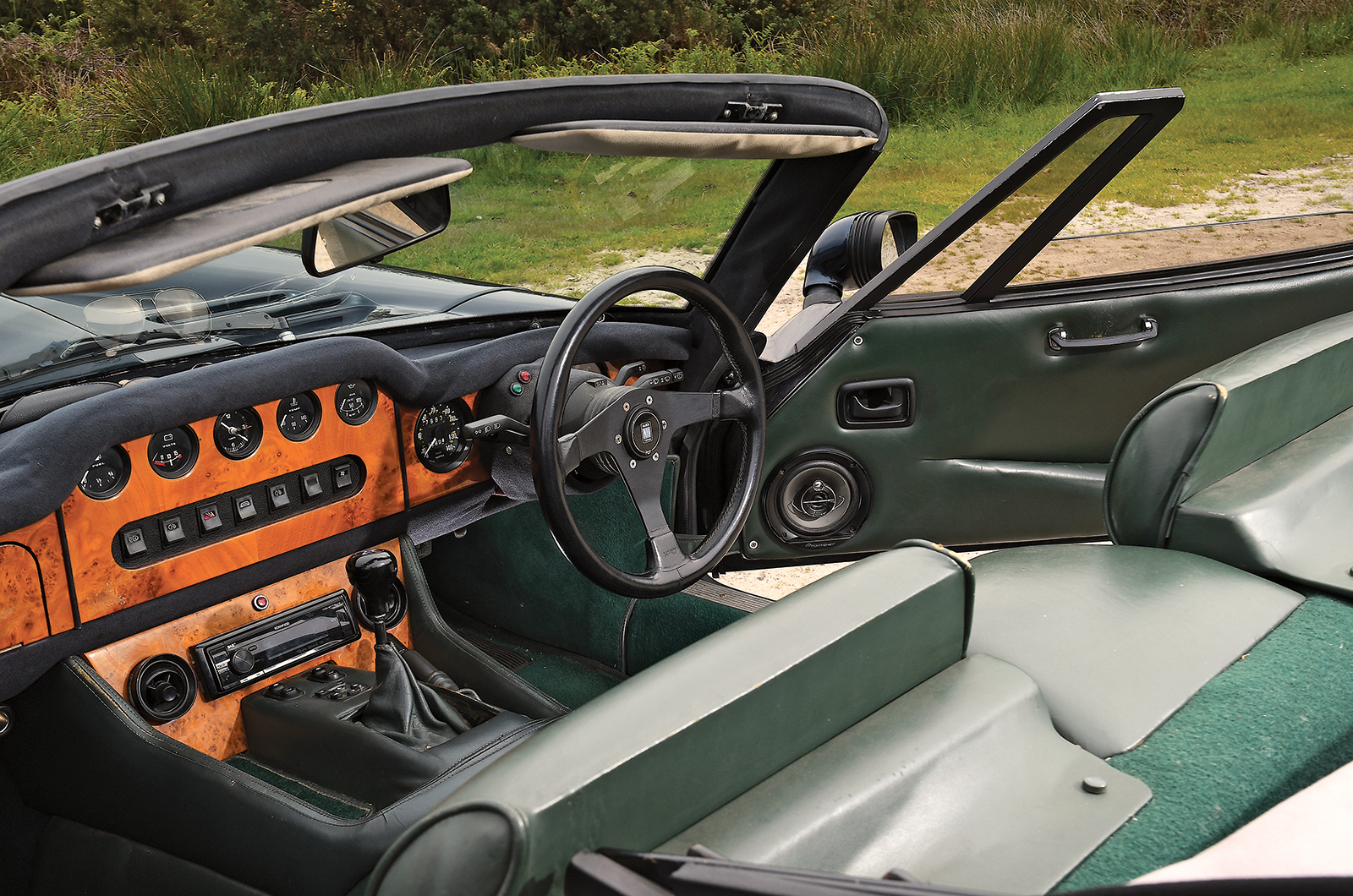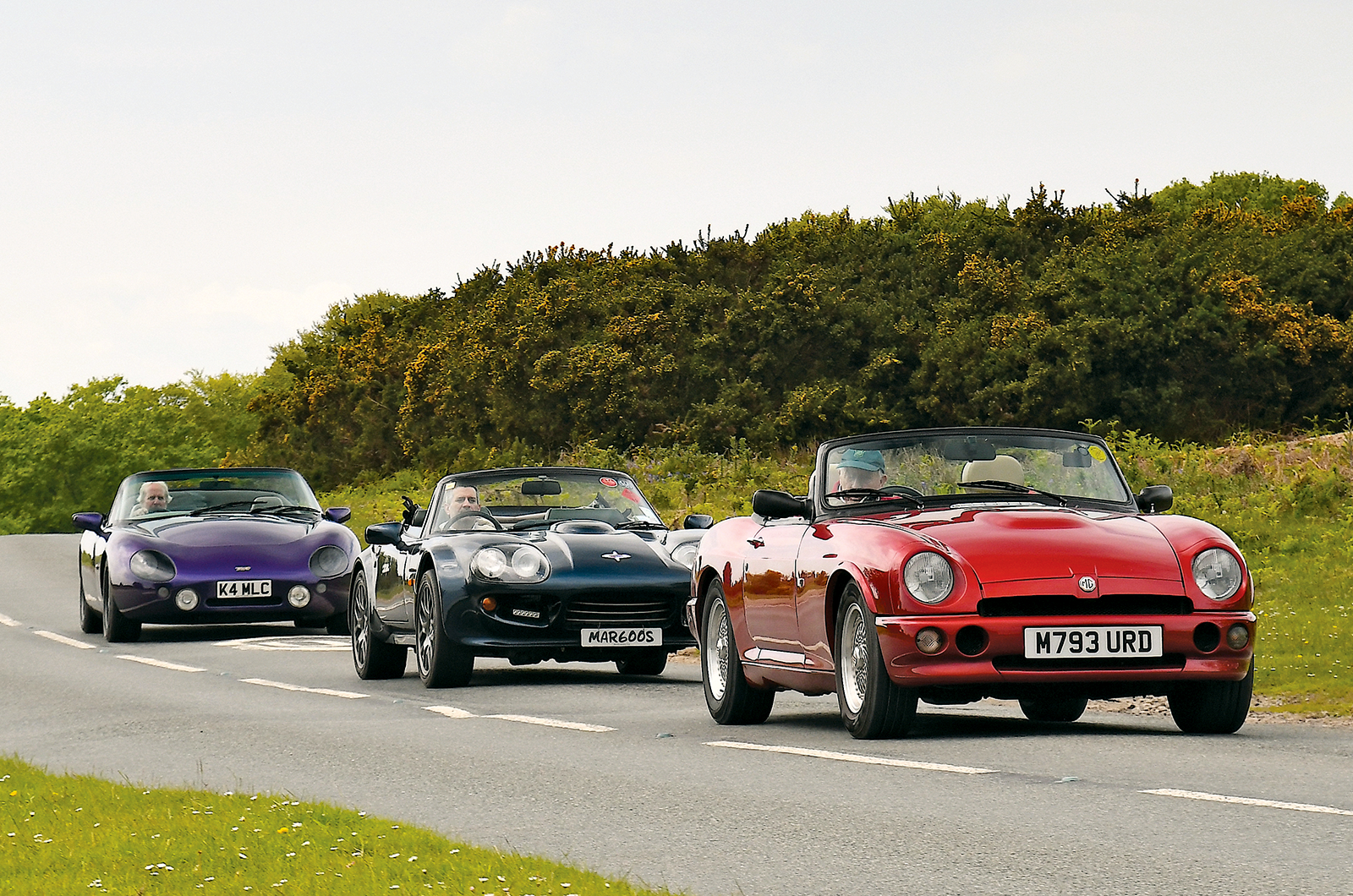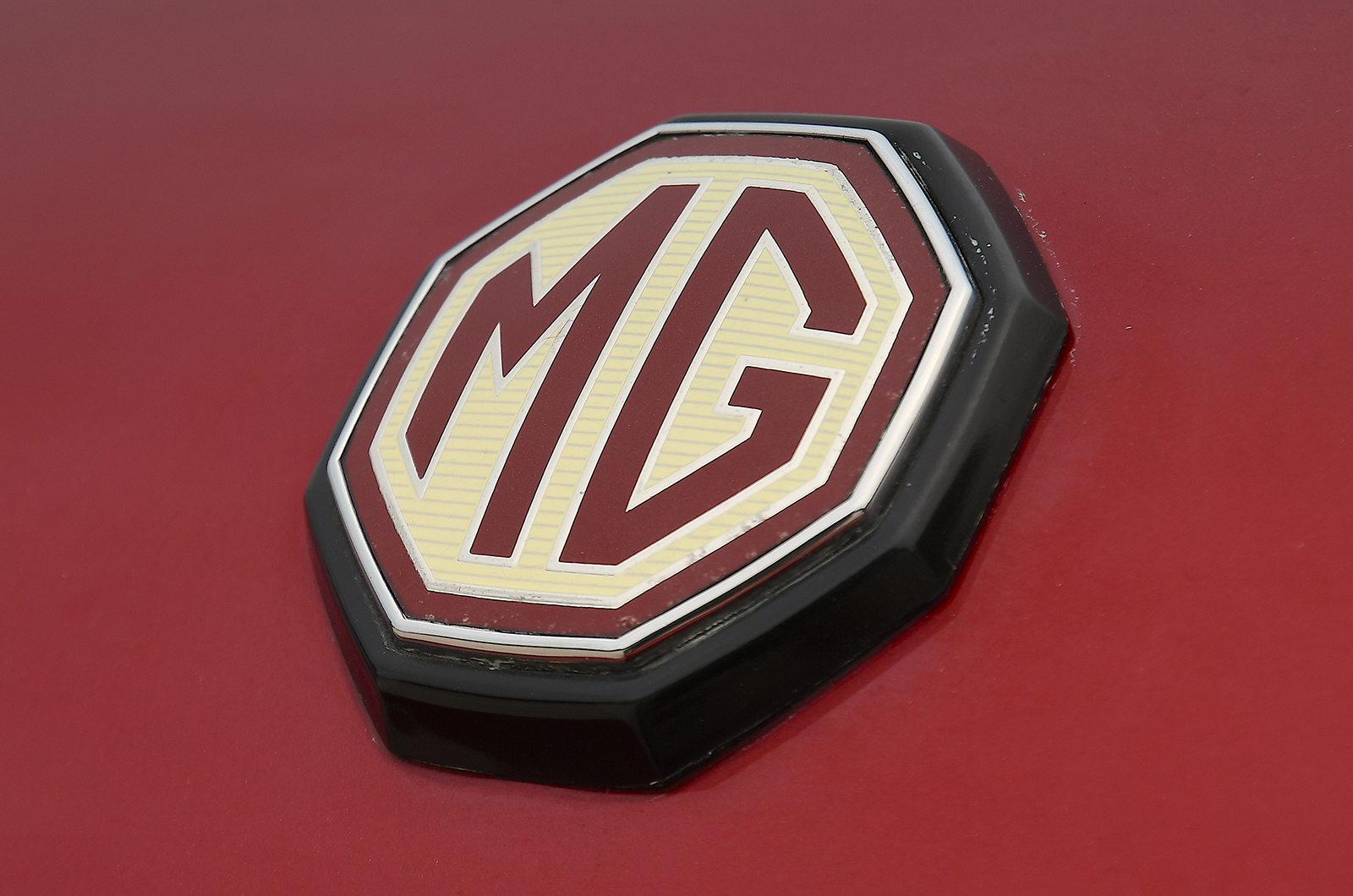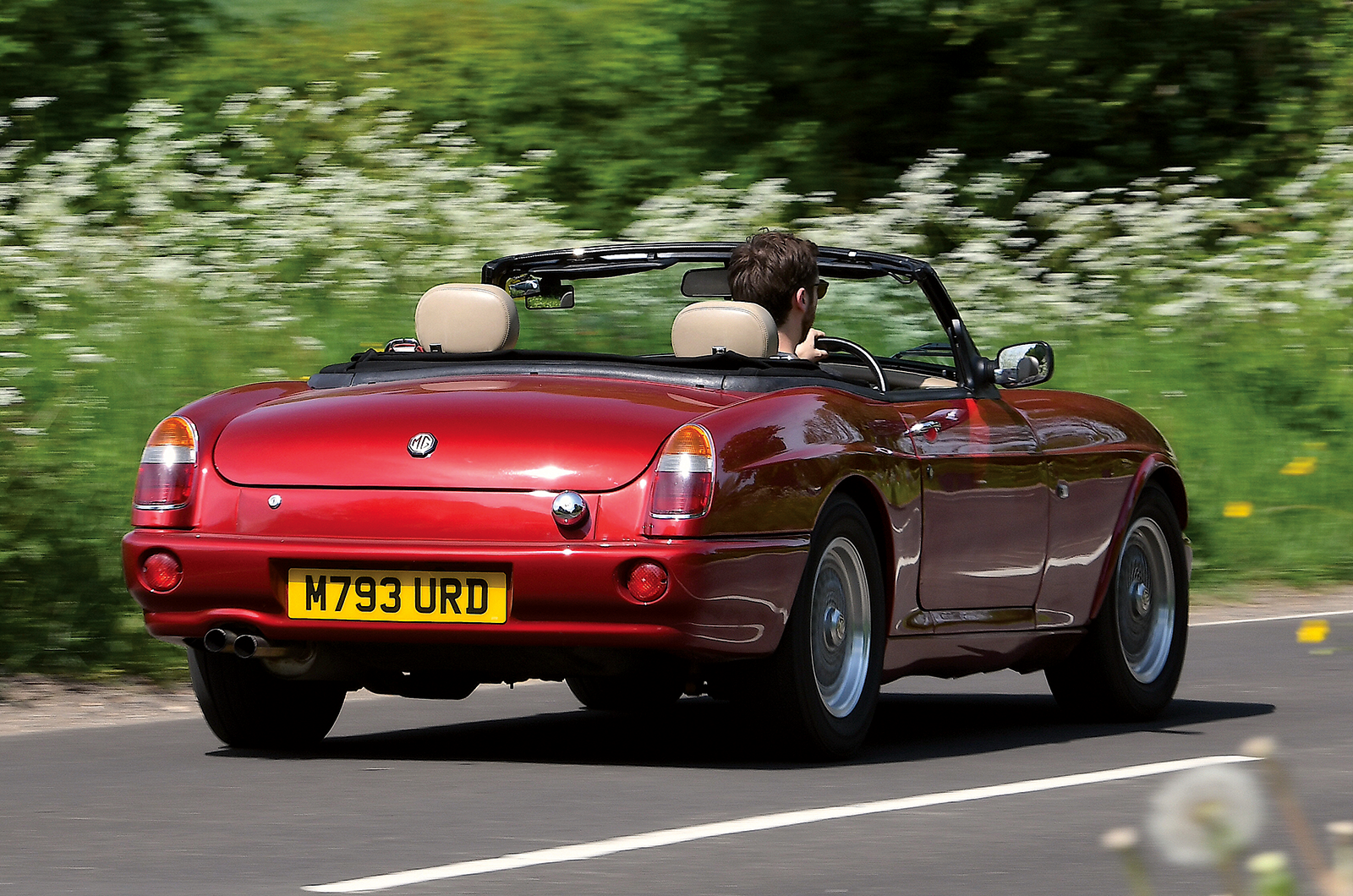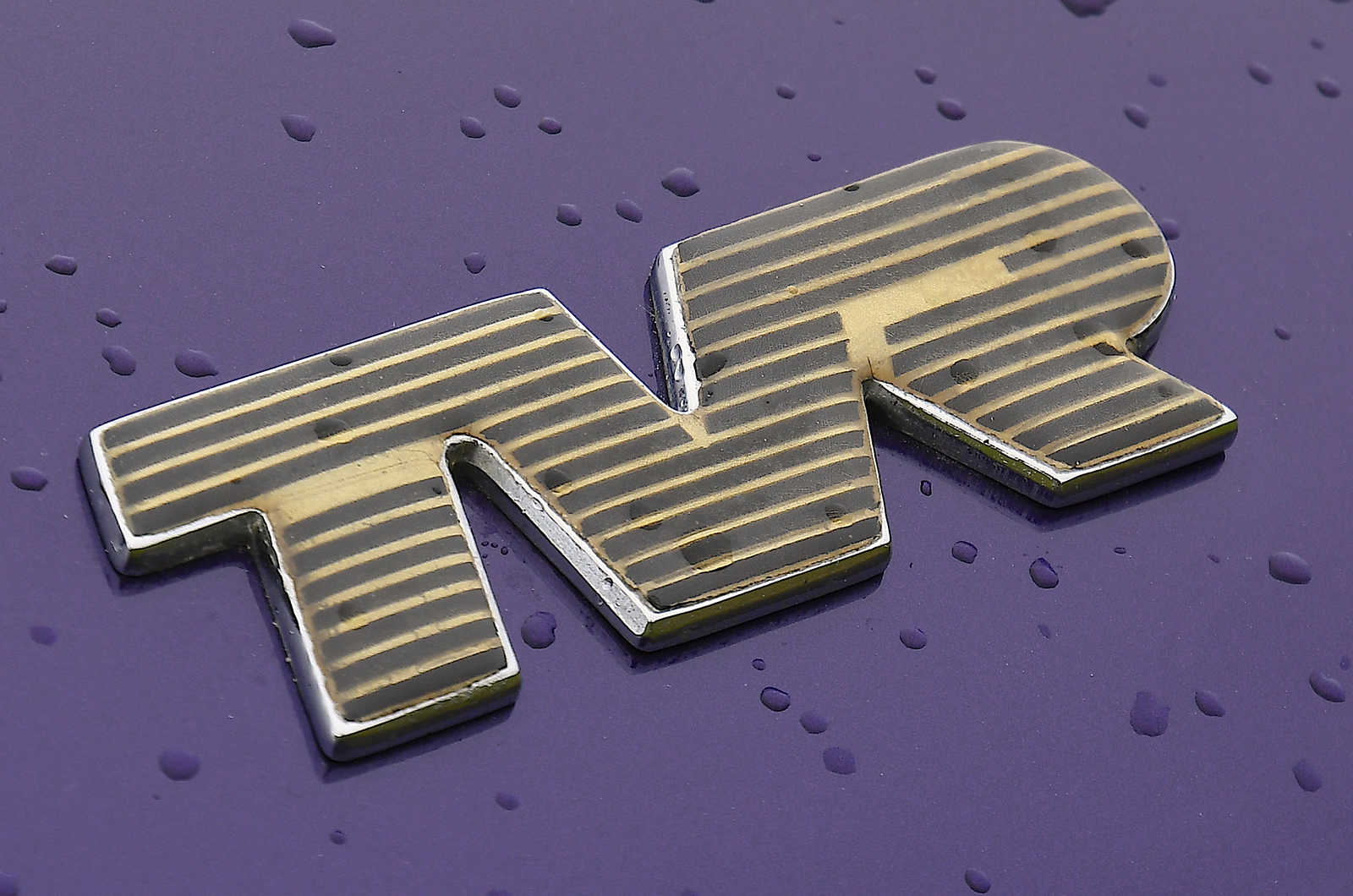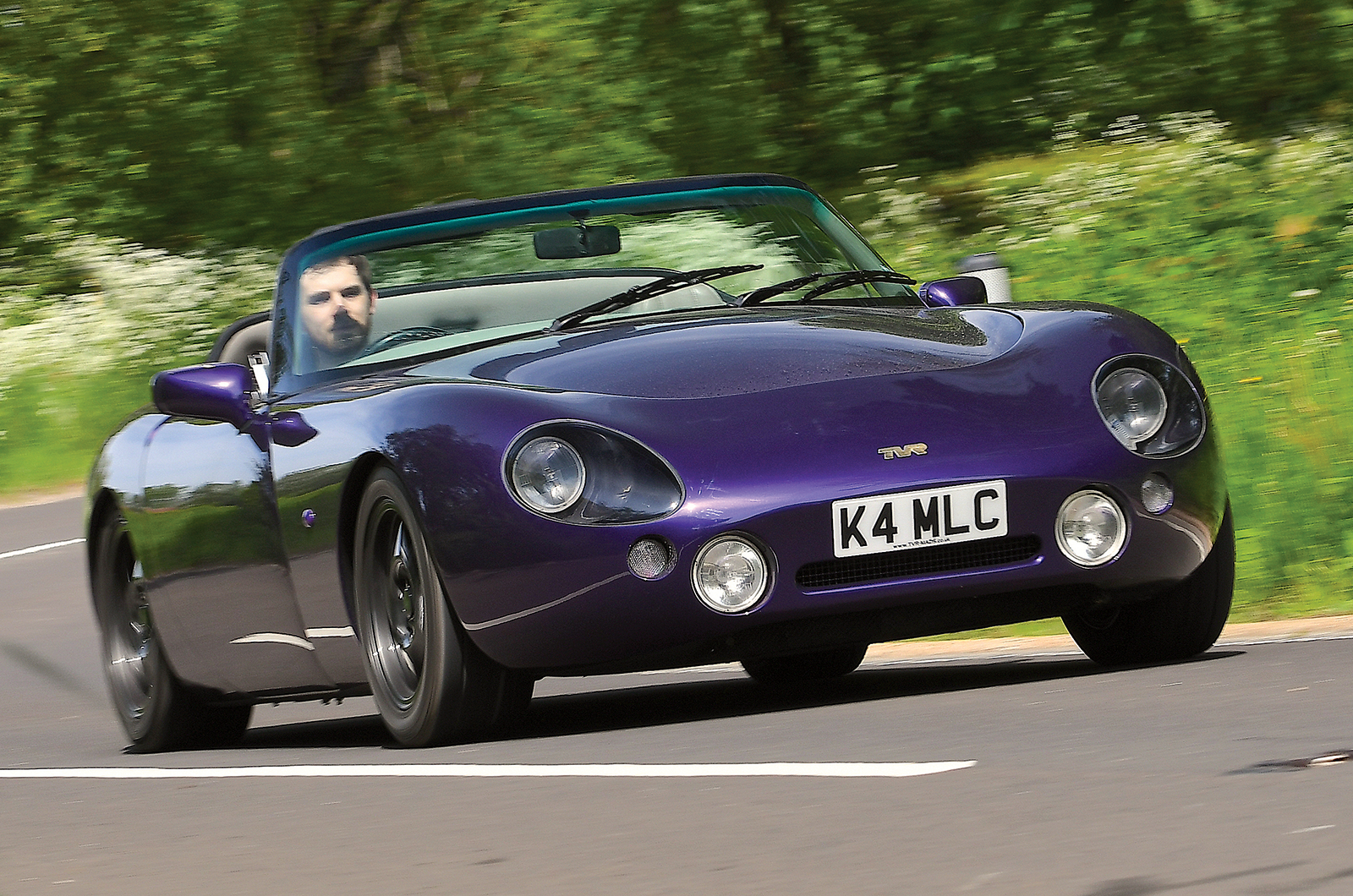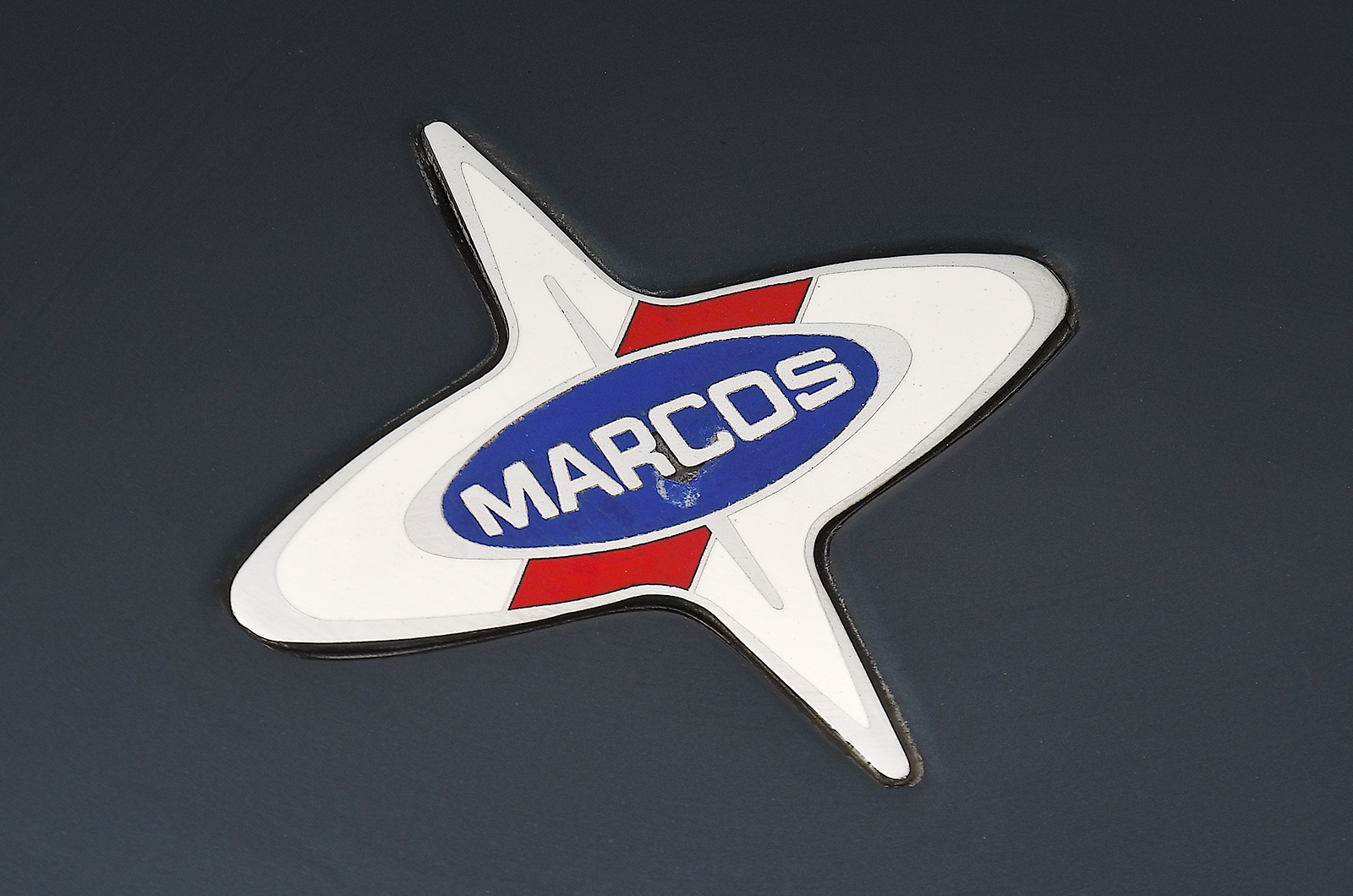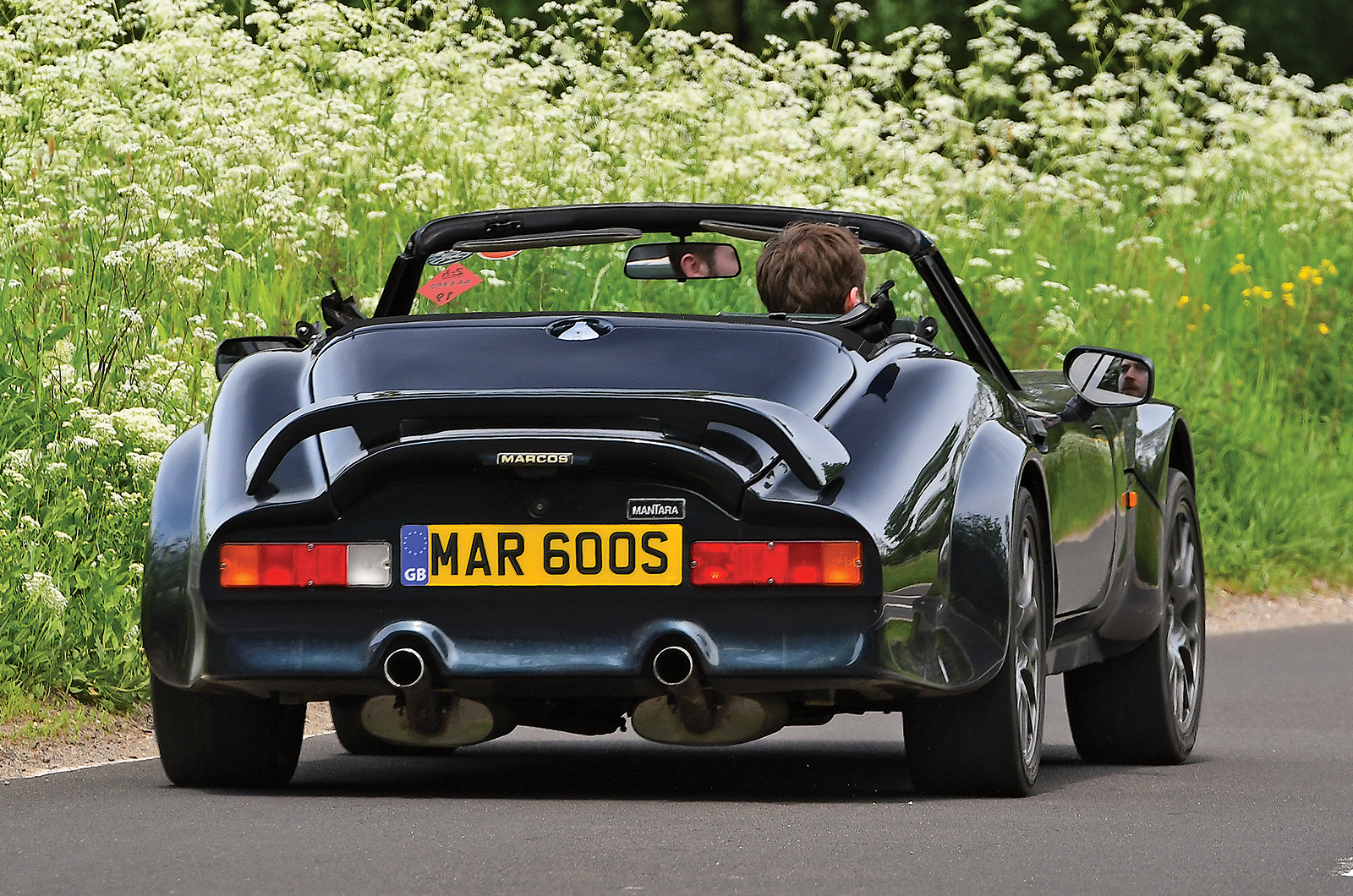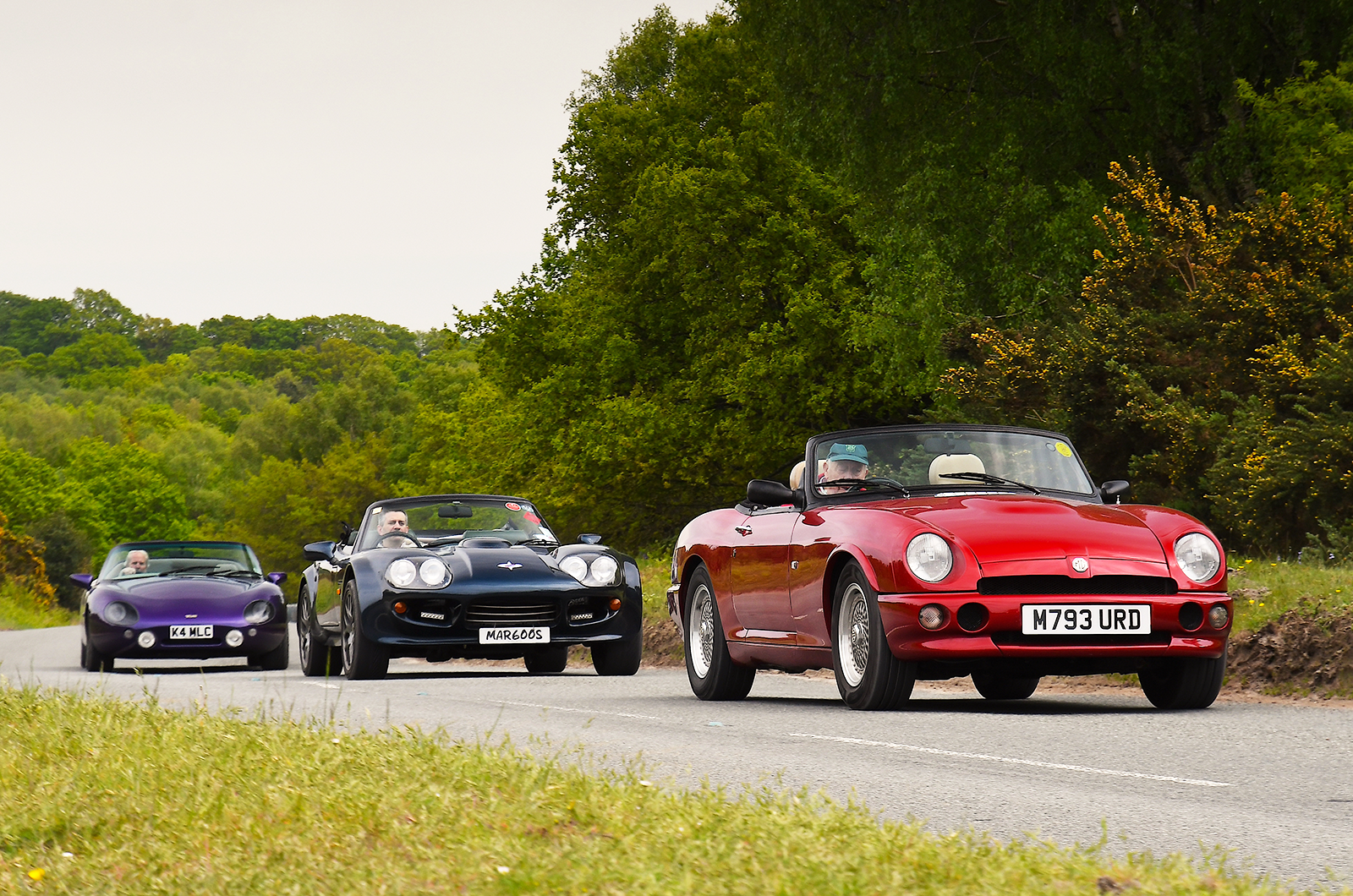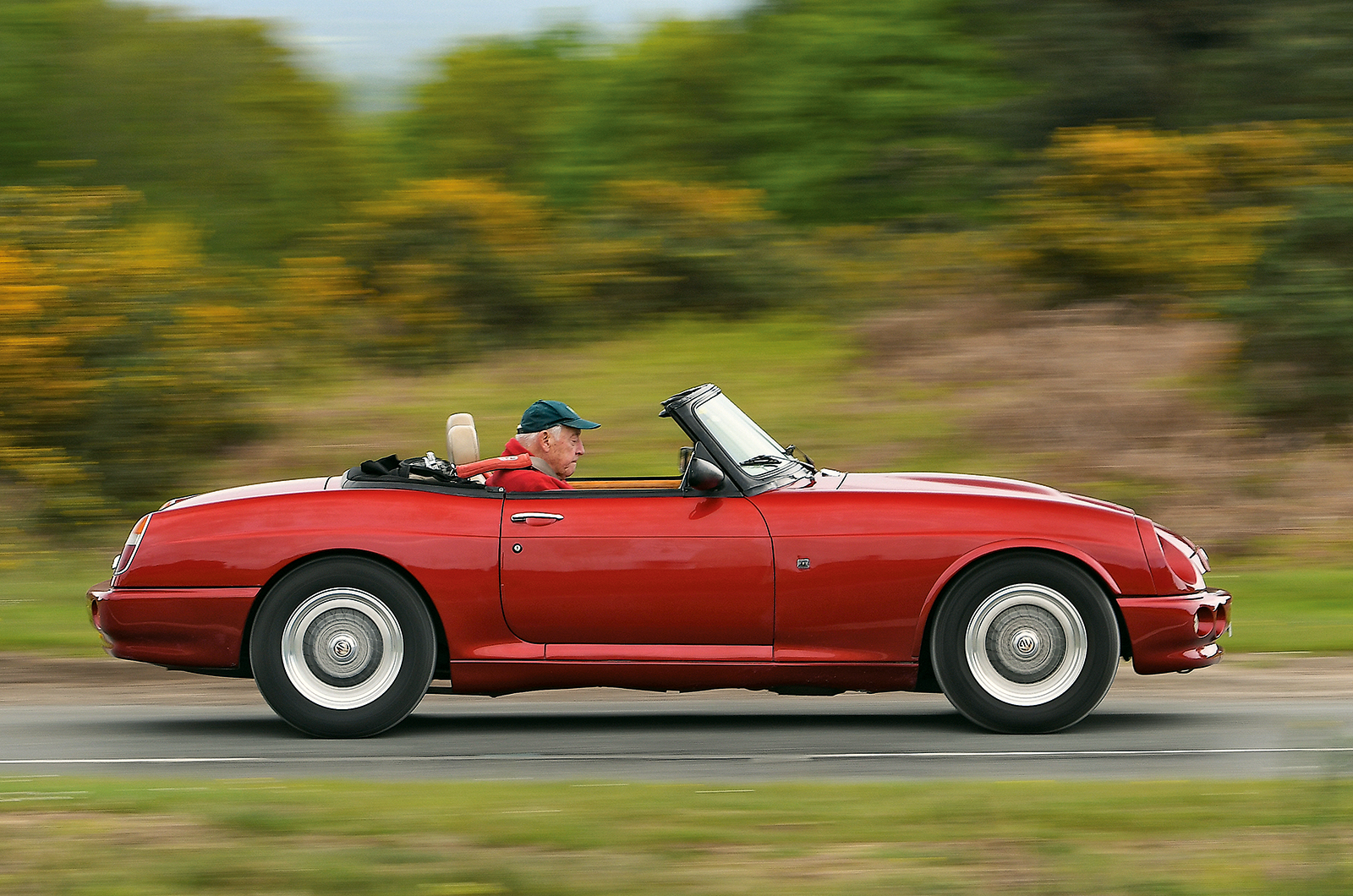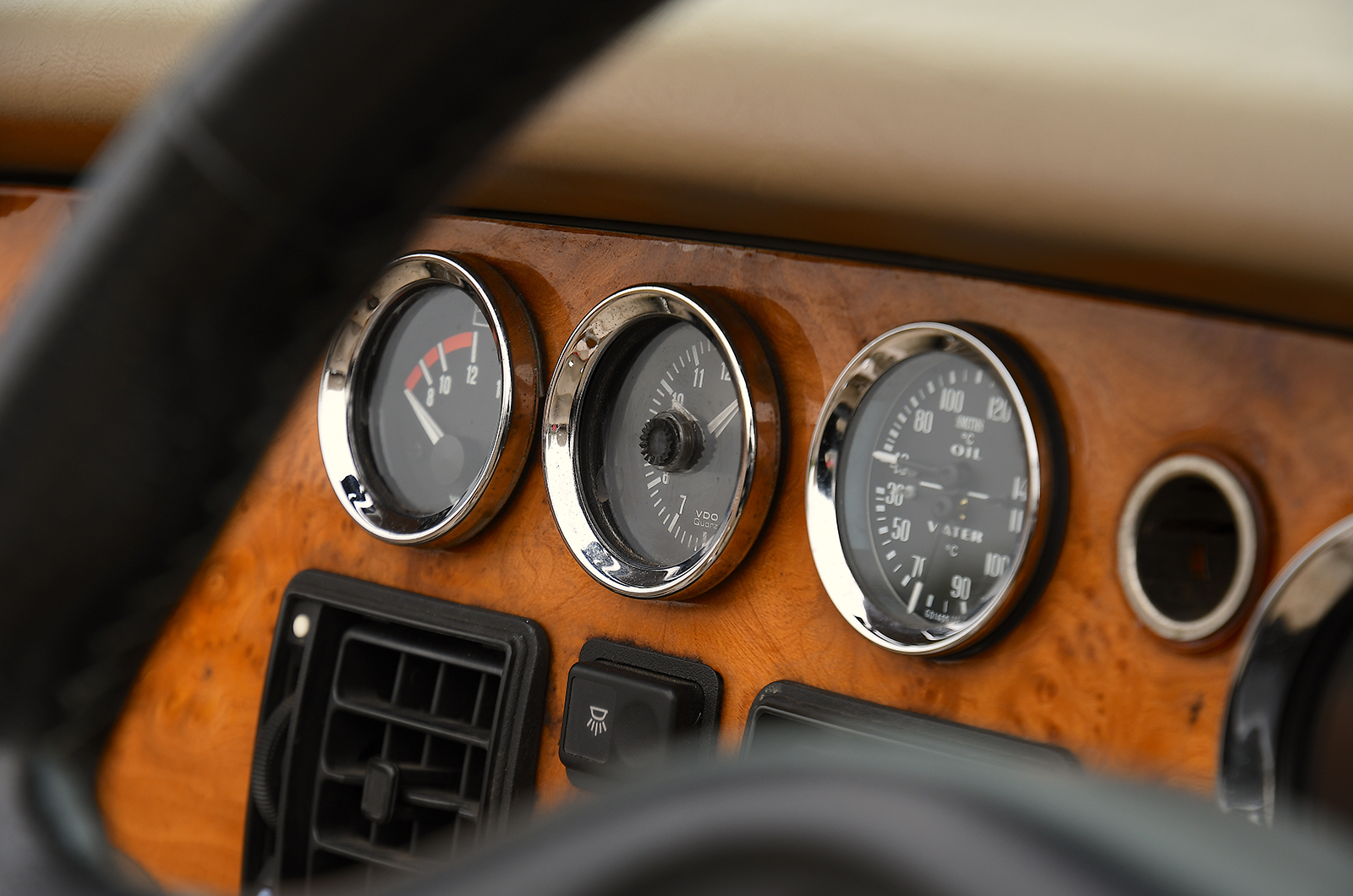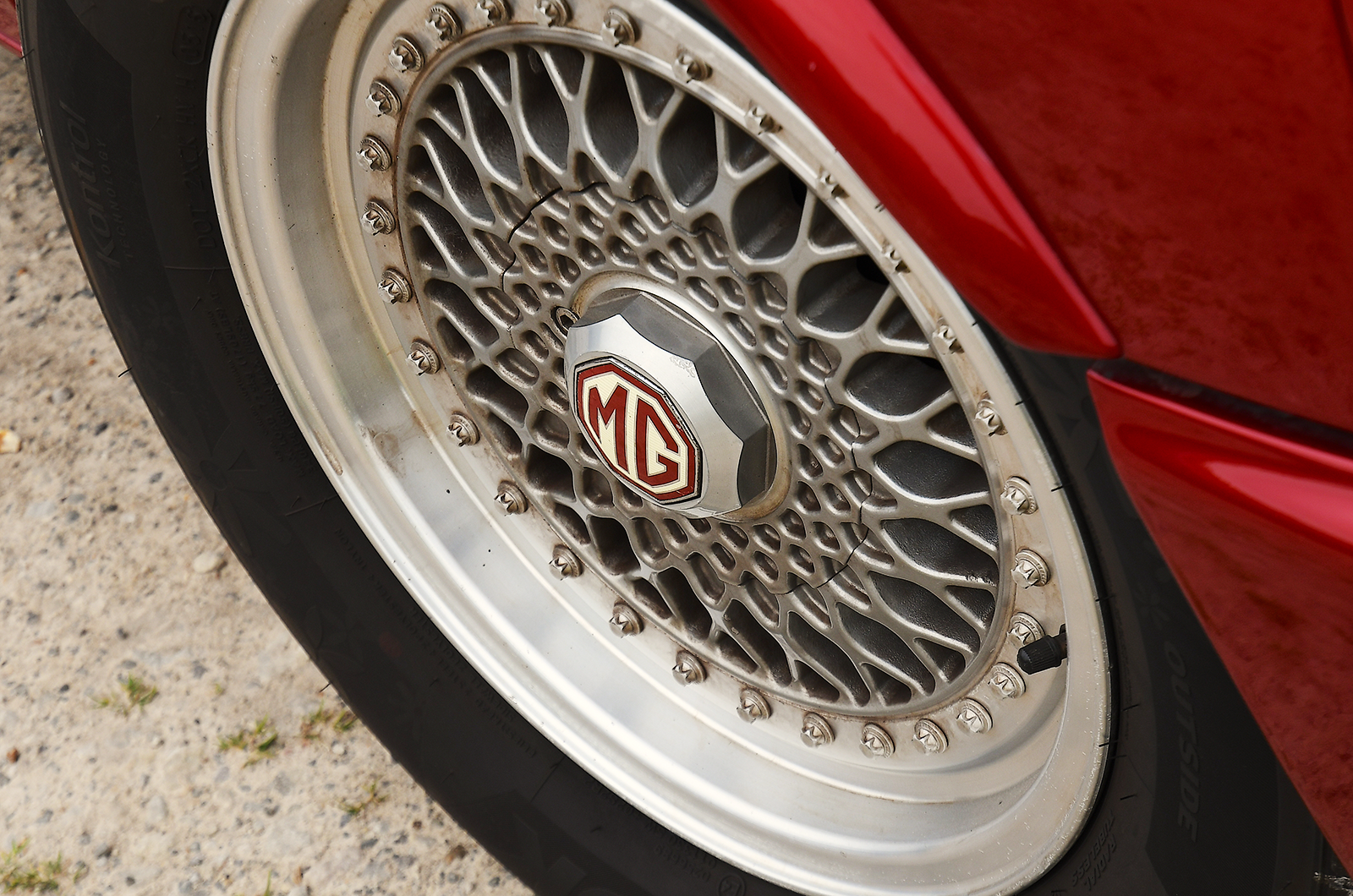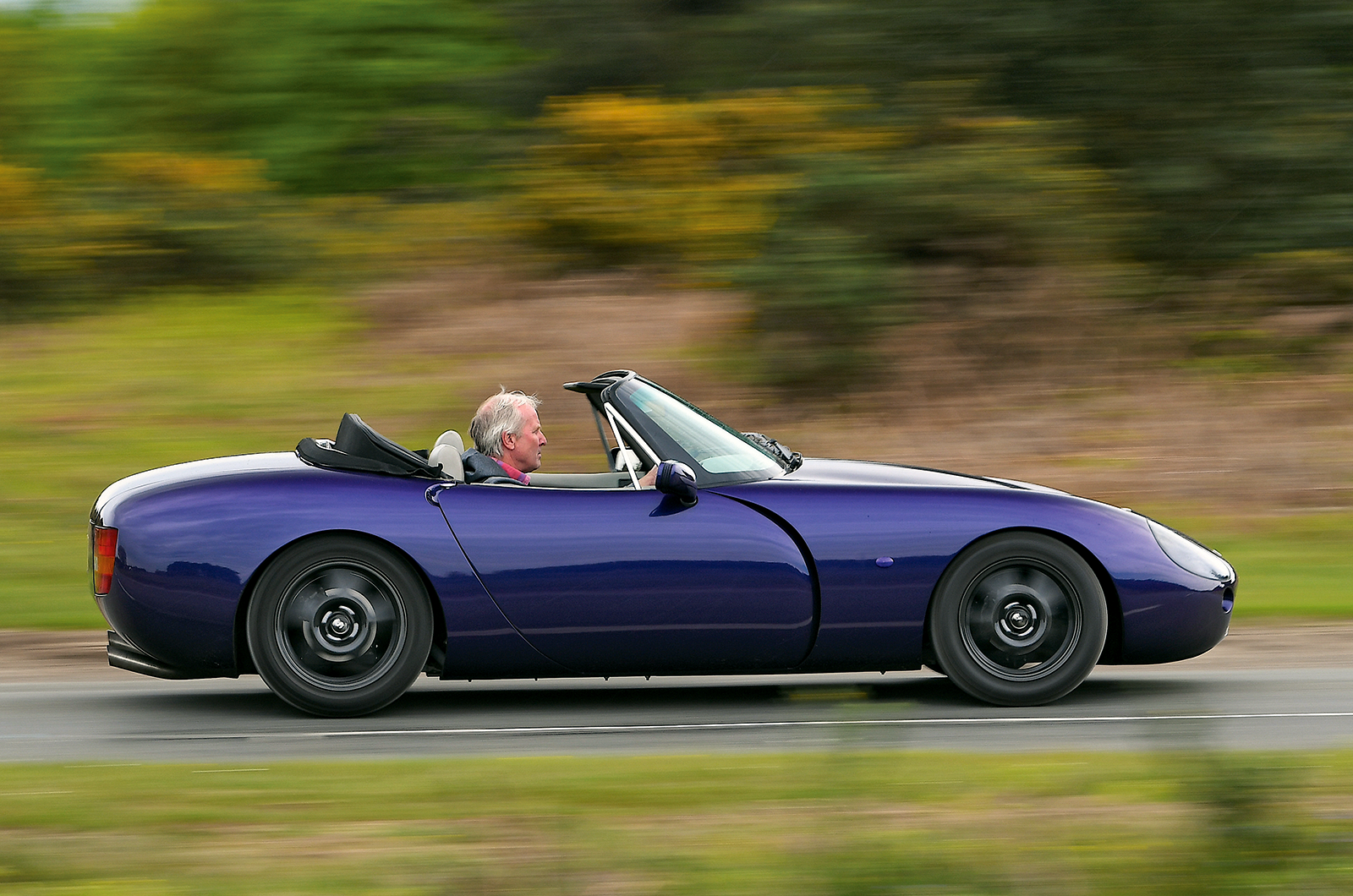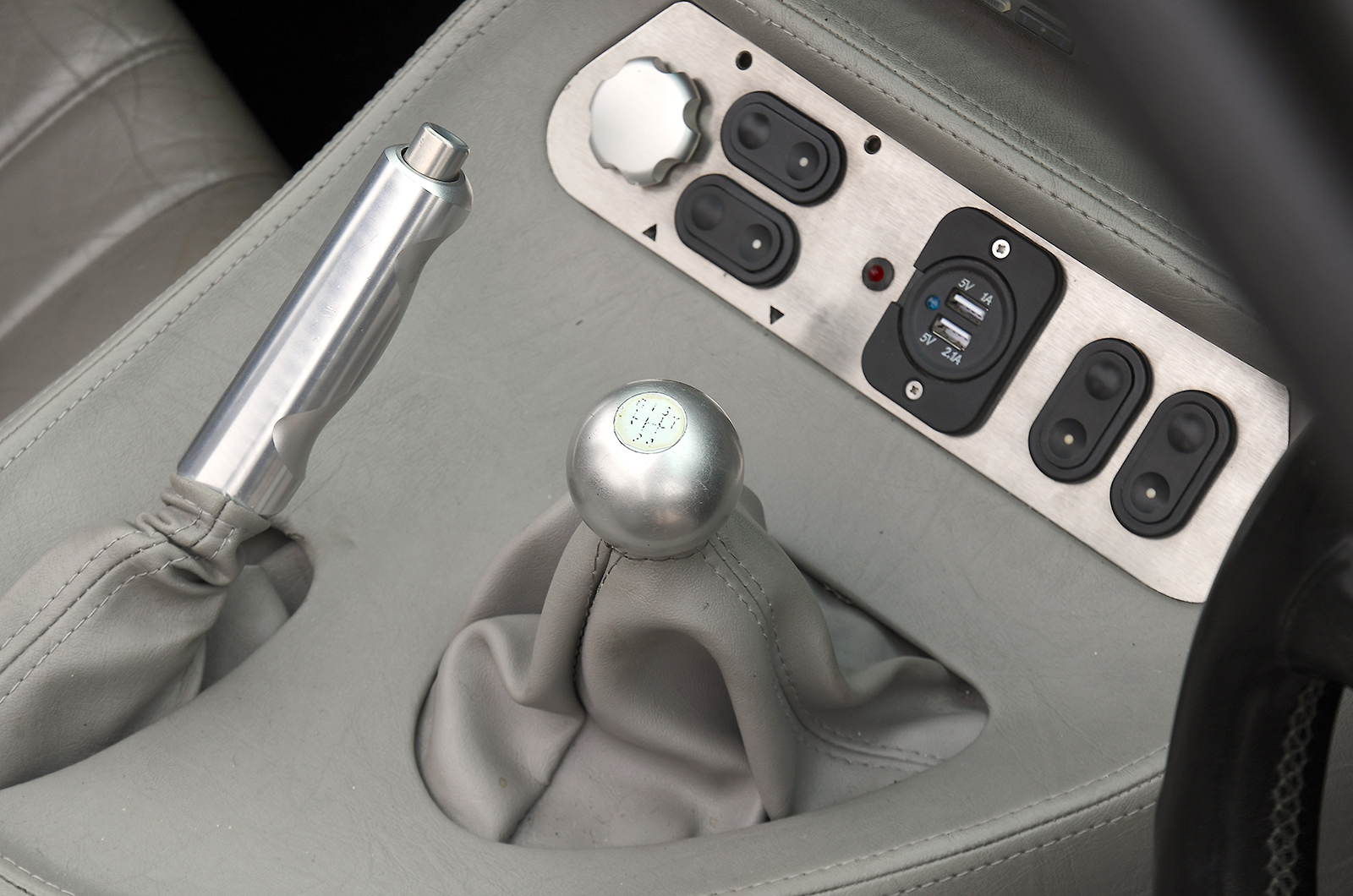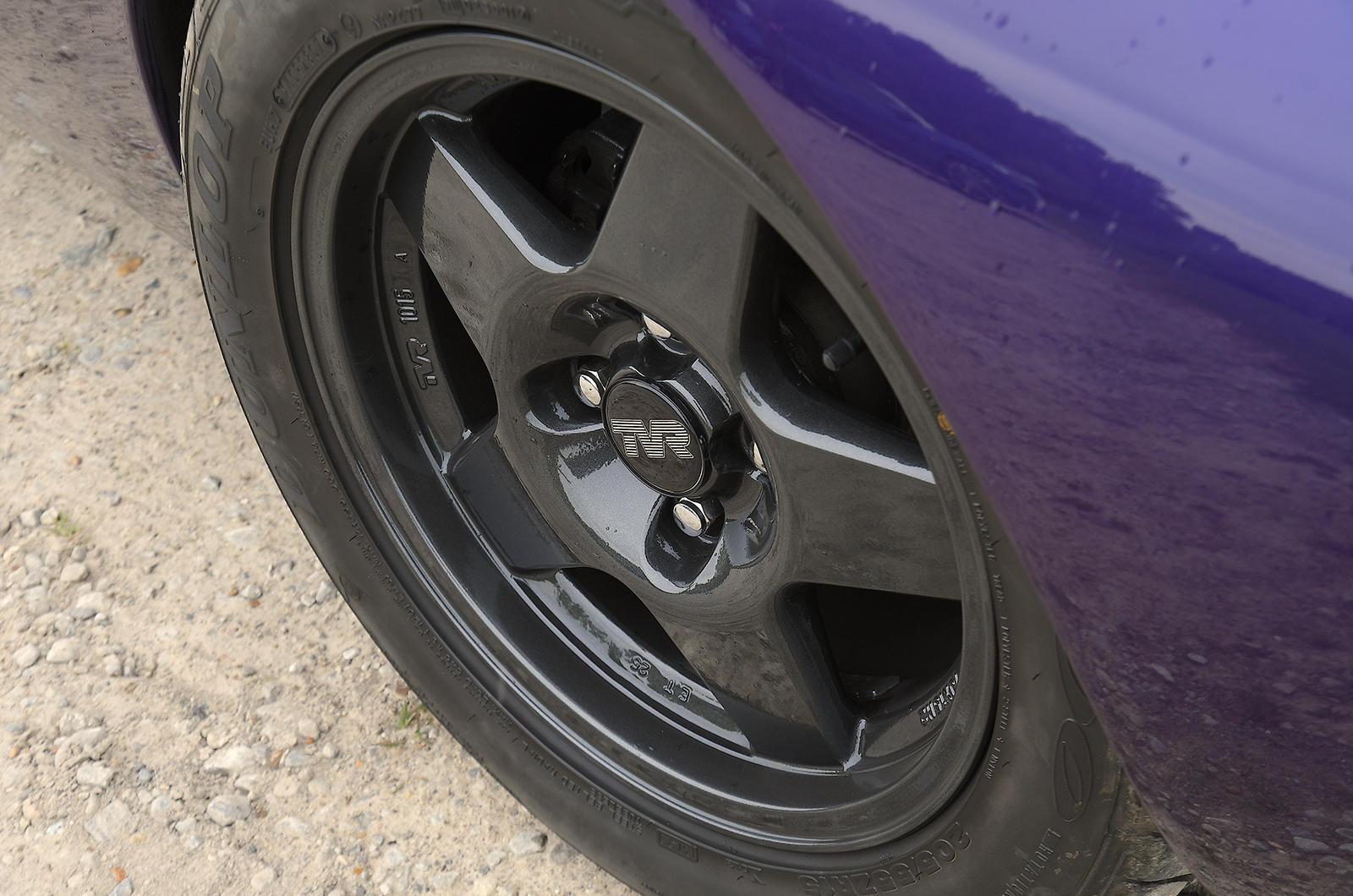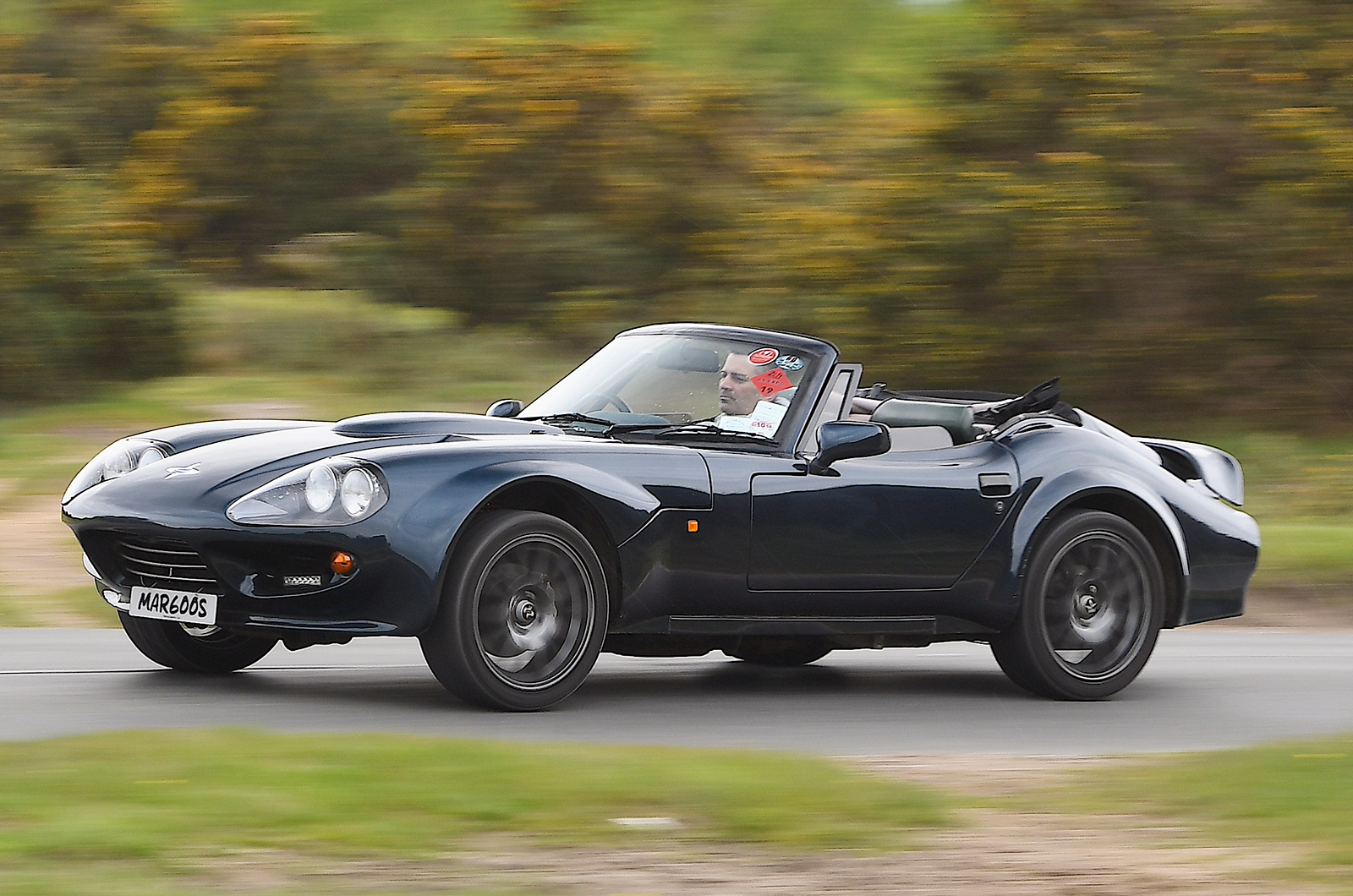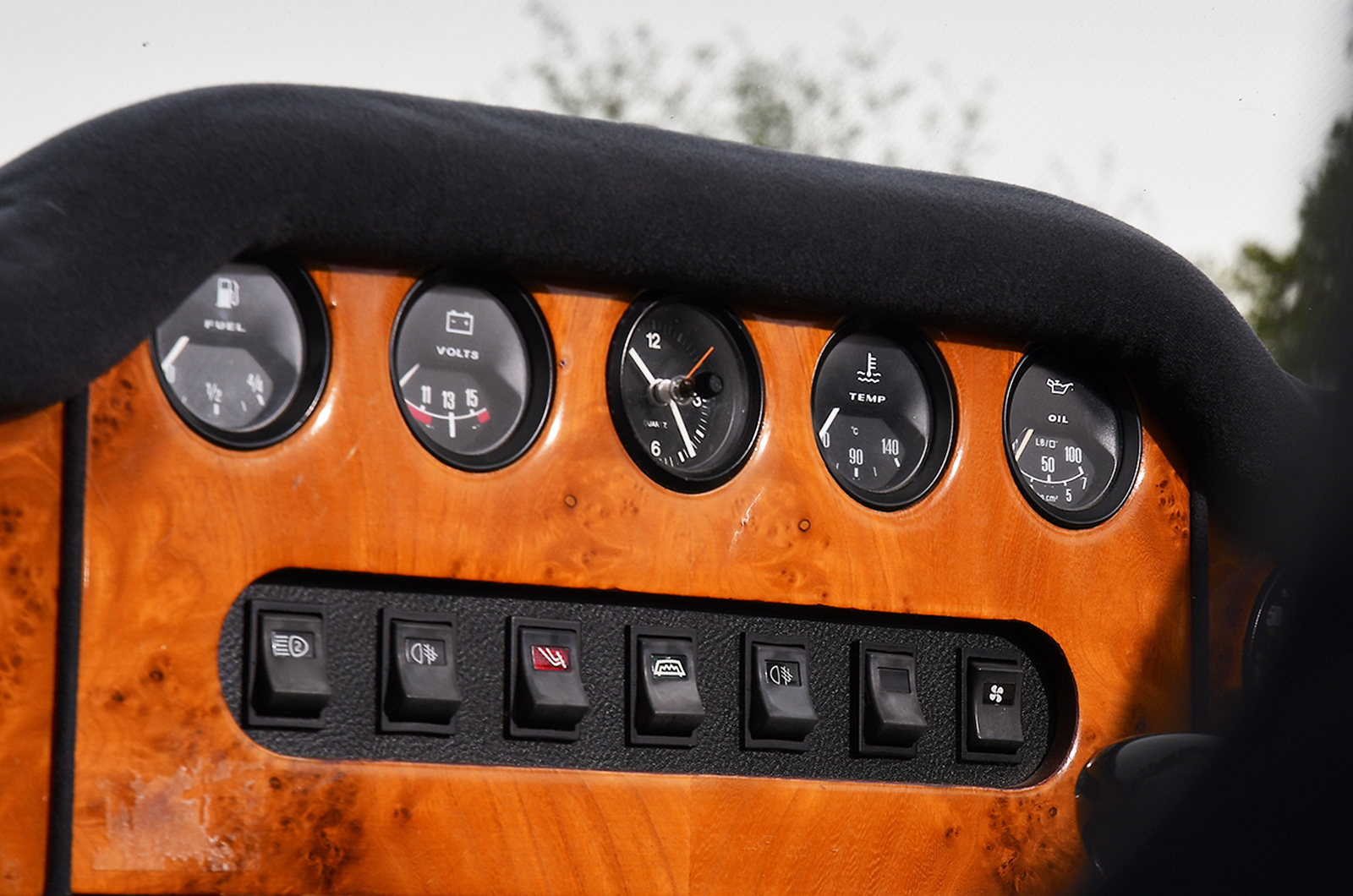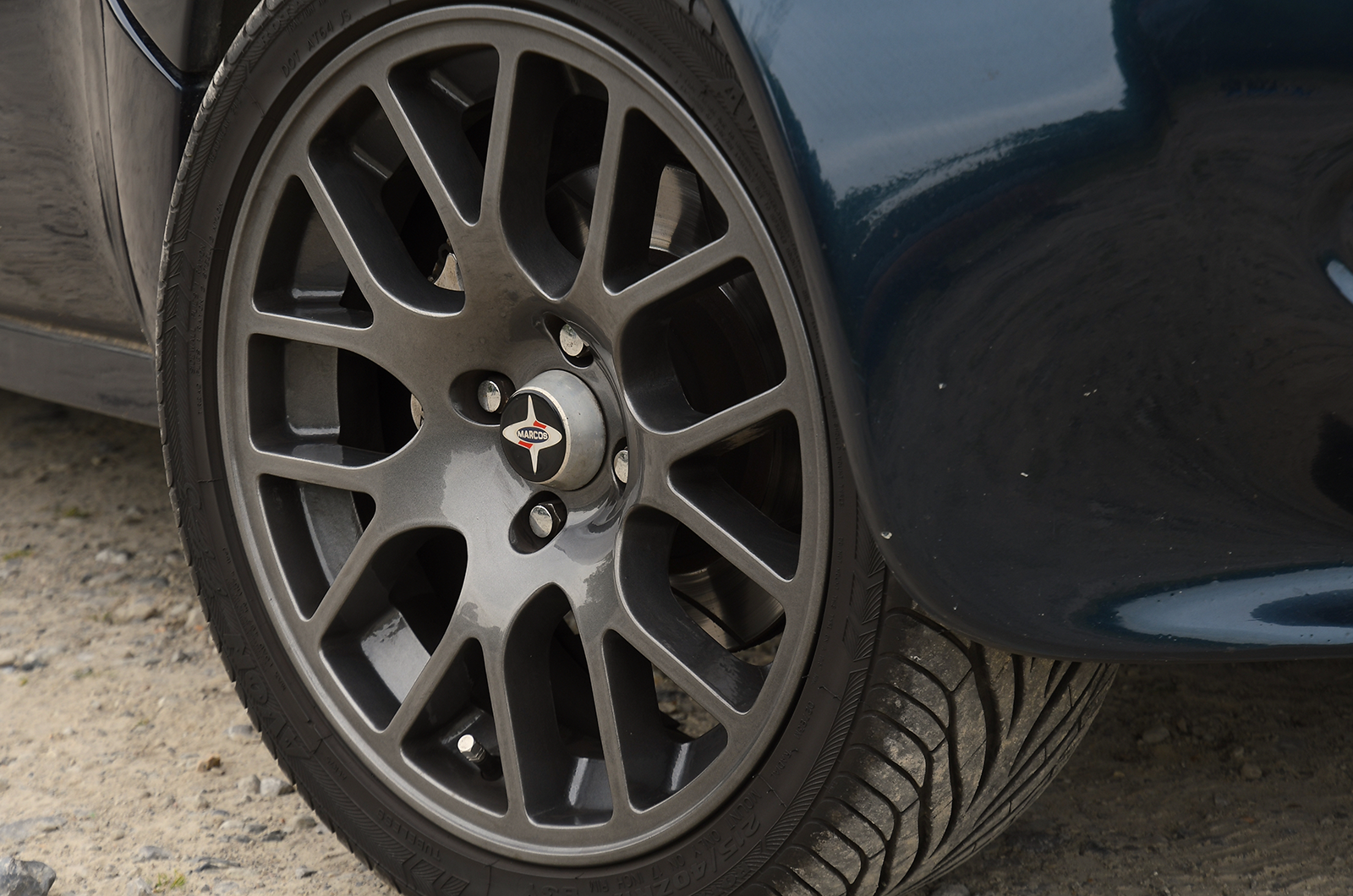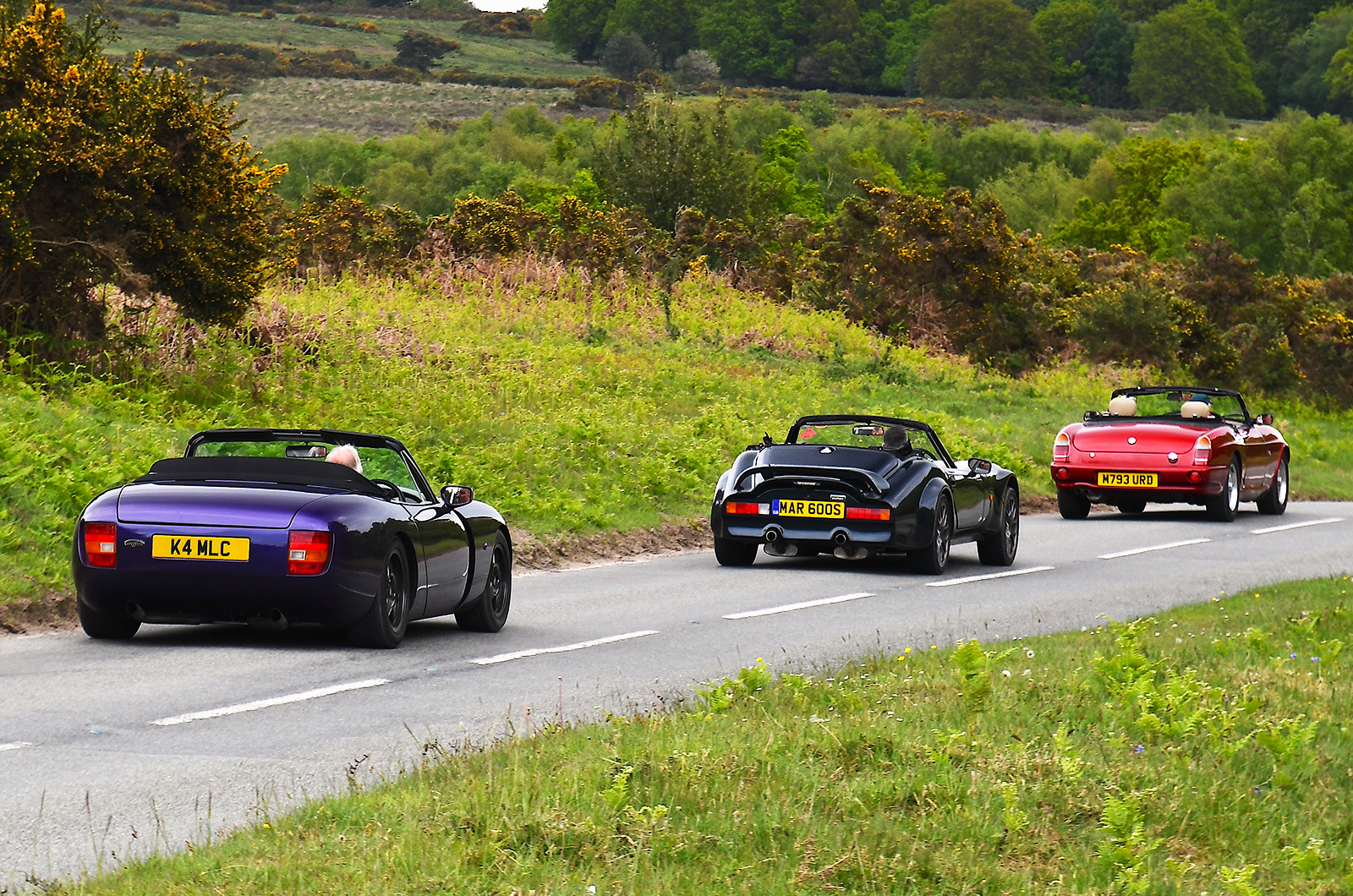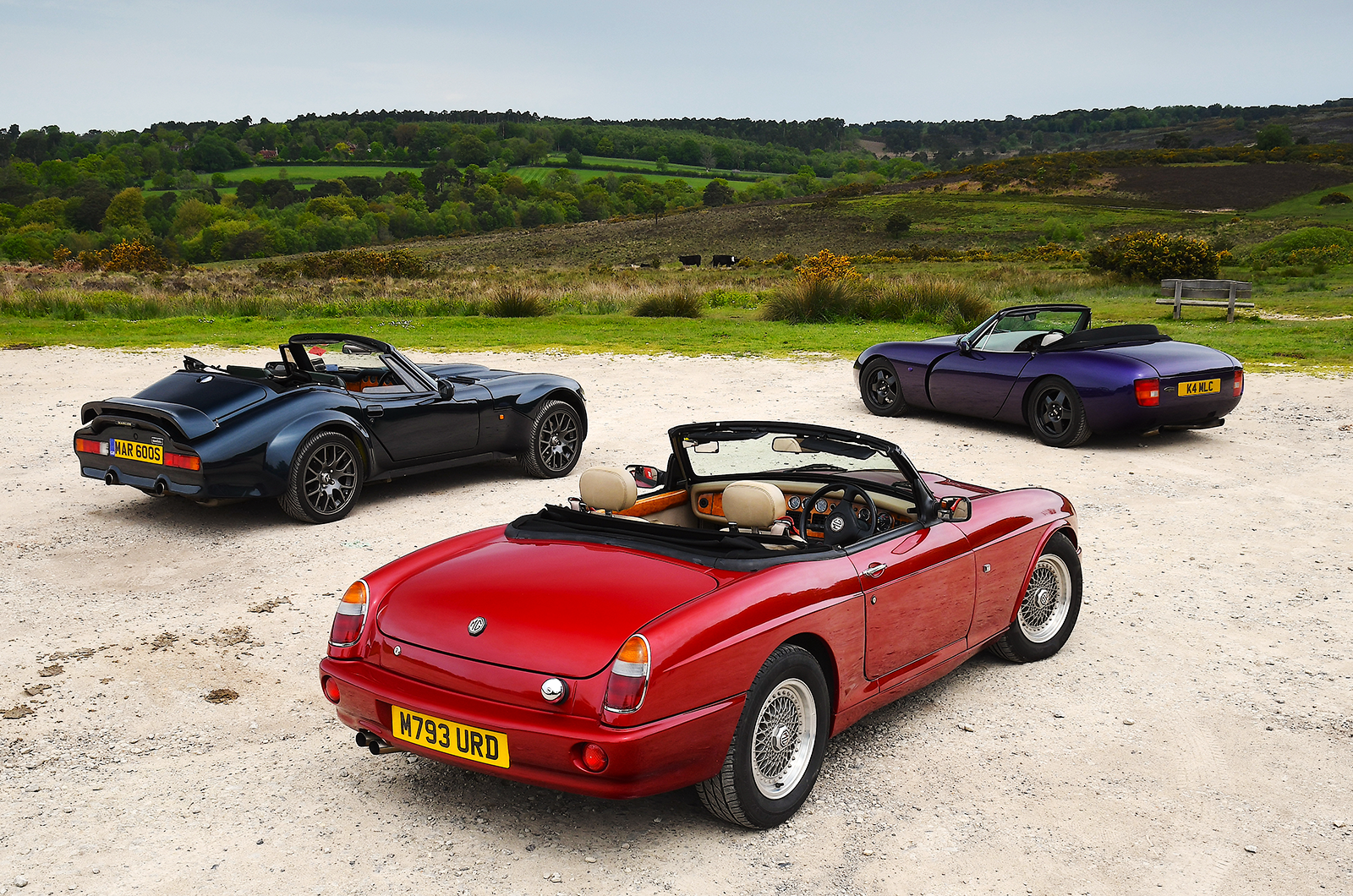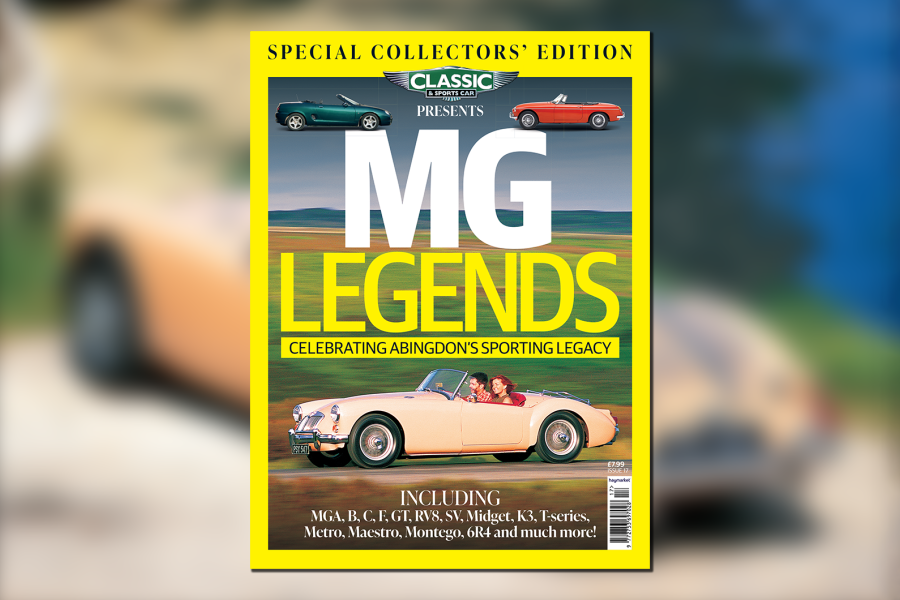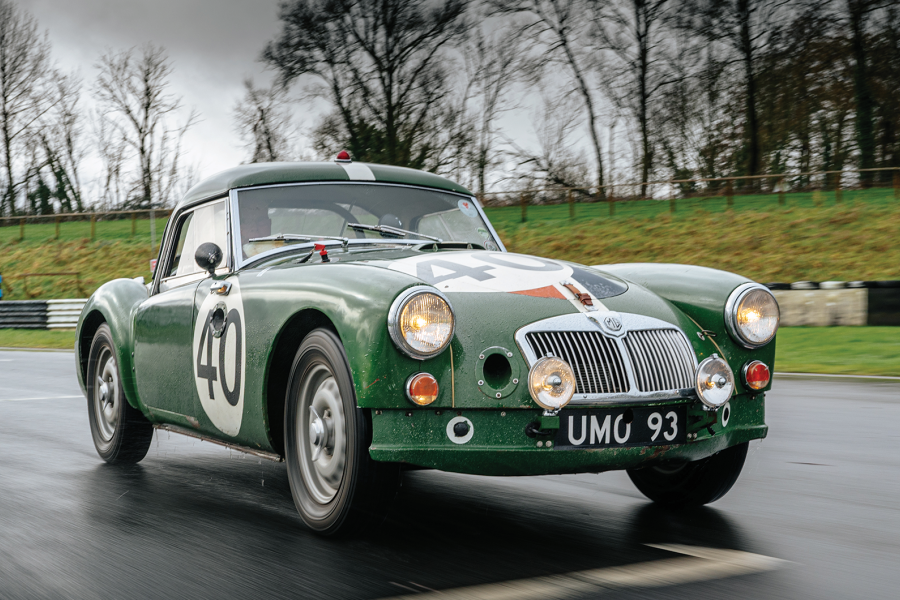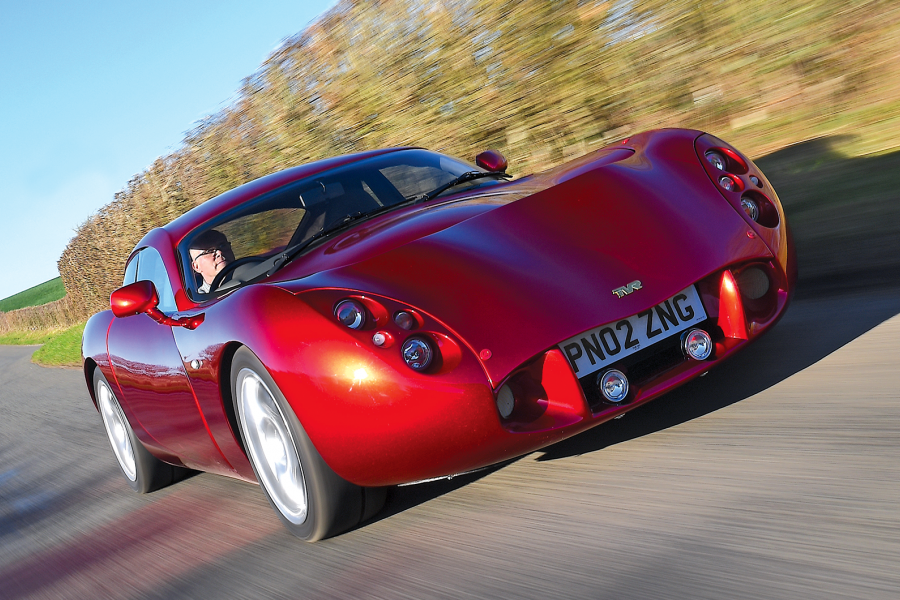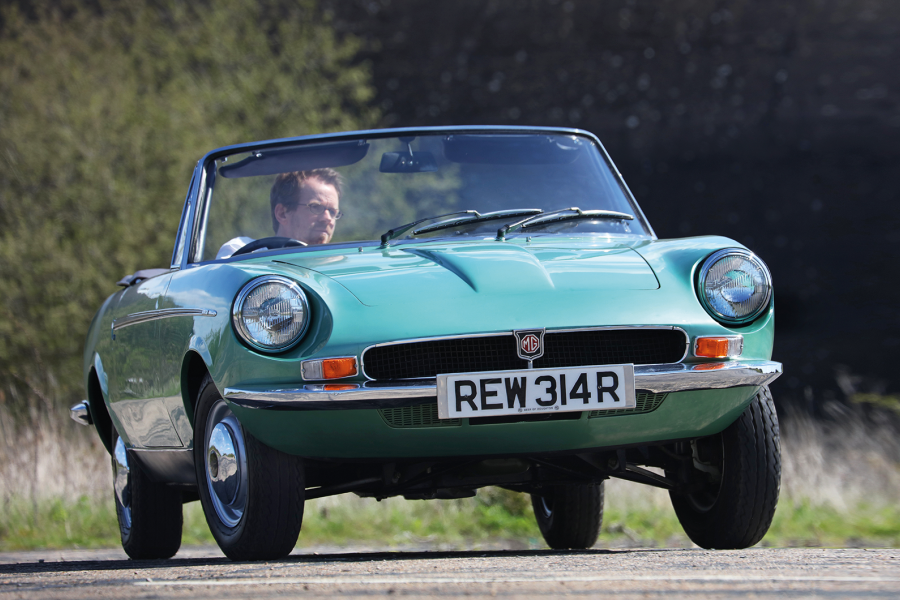At odds with the Marcos, the RV8’s seating position is actually rather high – more so than an original MGB, presumably due to its thicker modern seats; it can feel a bit exposed as a result.
There’s no rollbar, the beltline is low and the windscreen surround, while redesigned for the car, is just sheet steel and the tops of many drivers’ heads will poke above it anyway.
That does at least provide much better vision; in the high-backed Marcos in particular, but also the Griffith, it’s impossible to retain the same awareness of your surroundings.
In the MG RV8, with no rollbar and a low beltline, you’re left feeling quite exposed
Rover’s aim for the RV8 was to build a classic car without the commensurate foibles and inconveniences.
It is certainly the comfiest and most drivable of the three, but it is also the weakest dynamically.
Its floaty ride doesn’t help the steering, which can get disconcertingly light over bumps and crests.
Despite having the same 187bhp as the Marcos, the RV8’s extra 260kg robs it of the Mantara’s eagerness on the throttle.
The MG RV8 has a one-piece dash veneer
While the 0-60mph figures of the cars vary little on paper, the MG really needs to be wound up and revved hard to deliver its performance.
It is still capable of a brisk turn of speed, but it needs to work to achieve it and doesn’t have the addictive throttle response from the Rover lumps in the other two.
The first thought after a quick drive in the Griffith is that it feels as if it’s in a different league from its rivals – and there’s no denying that in outright performance, at least.
‘Rover’s aim for the RV8 was to build a classic car but without the commensurate foibles and inconveniences’
Weighing virtually the same as the Marcos, but with TVR Power’s version of the V8, its acceleration is savage in comparison.
It loses a little bit of that olde-worlde charm in the process, but the Coventry tuner’s good work takes the Rover unit from a classic burbler to a much racier, more serious place.
It revs freely and provides motive effort with a delightful linearity, right up to its redline.
It’s clearly a more sporting motor compared with the lazy crate unit.
The TVR’s door and bonnet hinges hide behind other panels for a cleaner look
Its chassis is more advanced than those of the MG and Marcos, too, with properly located suspension that won’t be thrown by mid-corner changes in the road surface, but its rigidity is most impressive.
It’s the only one of the trio that avoids significant scuttle shake; combined with a tightness in the steering and suspension, it feels easily the most agile.
Its steering, with just 2.2 turns from lock to lock, is straight from the track, and the TVR darts with each direction change.
The TVR Griffith’s out-there interior is restrained enough to appeal to more conservative buyers
You have to grab the small wheel firmly at all times, though, or the unassisted helm will jump around in your hands.
It never relaxes, but communicates everything.
Despite its reputation for being unforgiving, this 4-litre Griffith doesn’t intimidate in the dry, but it is easy to see how the 5-litre model would gain such notoriety.
A short wheelbase makes the TVR twitchy, as does the quick steering.
The TVR Griffith is the most raw sports car in this trio
It’s the opposite to the Marcos: you have to be precise in the Griff.
Play around with big lumps of throttle or sudden steering inputs and it will deliver you to the nearest hedge.
It’s firmly sprung, too, and over-damped – although this car’s owner later admitted to maladjusted shock absorbers, on too high a setting.
The Marcos Mantara makes a convincing pastiche of a 1960s sports car
At odds with its frantic road manners is the impressively comfortable cabin.
The sculpted dashboard resembles a miniature skate park: its gentle scoops and peaks are a sign of the madness to follow in future TVRs, but it’s still restrained enough here to appeal to more conservative eyes.
It was a clever move from TVR: those soft curves imitate the injection-moulded interiors of the day and disguise what was a low-volume dash of glassfibre and wood.
The Marcos Mantara’s dashboard looks similar to the Jaguar E-type S3’s
All three of these sports cars attempted to rekindle the old way of doing things, judging that some drivers were left cold by the increasing sophistication of ’90s performance machinery.
But while it was Rover that claimed to be building a modernised classic with the RV8, it’s the Marcos that actually does that best.
For those whose dream is of the raw V8 sports cars of the ’60s, a Sunbeam Tiger or an original Griffith, but can neither afford one nor fancy spending weekends adjusting carburettors, the Mantara is the bargain answer.
A widened track resulted in the Marcos Mantara’s distinctive wheelarches
The RV8’s talents proved a challenging sell in period: cars such as the Griffith outran it on sporting appeal, while plenty of mainstream rivals beat it for comfort.
A lukewarm reception at home sent Rover to a Japanese market in the grip of Brit-fever to sell the hoped-for numbers, but today the RV8 makes sense as a characterful alternative to a Mercedes-Benz SL.
If you’re looking to revel in the rumble of a V8 without sacrificing too much drivability, the MG provides just that – and it’s the cheapest of this trio today, both to buy and to run.
These low-volume sports cars finally unleashed the potential of the lightweight and powerful Rover V8
The Griffith, however, while not without its flaws – namely uptight handling and a hardly stellar reliability record – is the real power-for-your-pound champion.
Its thrilling, combative driving manners won’t be to everyone’s taste, but TVR was the only one of the three that took a Rover V8 and created a car capable of holding its own against the Porsche 911.
The fact that it is still available for less than half of what a contemporary 911 will cost makes it one of the best buys anywhere in the classic car world, let alone among this class of ’92.
Images: John Bradshaw
Factfiles
TVR Griffith
- Sold/number built 1992-2002/2582
- Construction tubular steel backbone chassis, glassfibre body
- Engine all-alloy, ohv, 16v 3946cc V8, multi-point fuel injection
- Max power 236bhp @ 5250rpm
- Max torque 270lb ft @ 4000rpm
- Transmission five-speed manual, RWD
- Suspension independent, by double wishbones, coilover dampers f/r; front anti-roll bar
- Steering rack and pinion
- Brakes vented front, solid rear discs, with servo
- Length 13ft (3965mm)
- Width 6ft 5in (1943mm)
- Height 3ft 11in (1185mm)
- Wheelbase 7ft 6in (2286mm)
- Weight 2303lb (1045kg)
- Mpg 19
- 0-60mph 4.8 secs
- Top speed 146mph
- Price new £28,965 (1992)
- Price now £17-35,000*
Marcos Mantara
- Sold/number built 1992-’98/192
- Construction steel spaceframe chassis, glassfibre body
- Engine all-alloy, ohv, 16v 3946cc V8, multi-point fuel injection
- Max power 187bhp @ 4750rpm
- Max torque 231lb ft @ 3200rpm
- Transmission five-speed manual, RWD
- Suspension independent, at front by MacPherson struts, lower links rear double wishbones, coil springs, telescopic dampers; anti-roll bar f/r
- Steering power-assisted rack and pinion
- Brakes vented front, solid rear discs
- Length 13ft 2in (4005mm)
- Width 5ft 6in (1680mm)
- Height 3ft 9in (1150mm)
- Wheelbase 7ft 5in (2273mm)
- Weight 2248lb (1020kg)
- Mpg 20
- 0-60mph 6 secs
- Top speed 131mph
- Price new £29,398 (1994)
- Price now £18-35,000*
MG RV8
- Sold/number built 1992-’95/1983
- Construction steel monocoque
- Engine all-alloy, ohv, 16v 3946cc V8, multi-point fuel injection
- Max power 187bhp @ 4750rpm
- Max torque 231lb ft @ 3200rpm
- Transmission five-speed manual, RWD
- Suspension: front independent, by double wishbones, coil springs rear live axle, lower control arms, semi-elliptic leaf springs; telescopic dampers, anti-roll bar f/r
- Steering rack and pinion
- Brakes vented discs front, drums rear, with servo
- Length 13ft 2in (4010mm)
- Width 5ft 7in (1694mm)
- Height 4ft 4in (1320mm)
- Wheelbase 7ft 8in (2330mm)
- Weight 2821lb (1280kg)
- Mpg 20
- 0-60mph 5.9 secs
- Top speed 135mph
- Price new £26,500 (1993)
- Price now £15-30,000*
*Prices correct at date of original publication
Enjoy more of the world’s best classic car content every month when you subscribe to C&SC – get our latest deals here
READ MORE
TVR T440R: Blackpool’s 200mph road-racer
Great eight: Morgan Plus 8 vs MGB GT V8 vs Triumph TR8 vs TVR 350i vs Marcos Mantula
Buyer’s guide: MG RV8
Charlie Calderwood
Charlie Calderwood is Classic & Sports Car’s Features Editor
